Studio spaces morph into personal sanctuaries the moment imagination meets thoughtful design. Recent interior trends highlight a renewed love for flamboyant tones, rich earth neutrals, and natural textures, proving an art room can feel both grounded and adventurous. Artists are also borrowing cues from biophilic design, weaving living greenery and daylight into their creative cocoon to boost mood and focus. Whether you have a spare bedroom, sun-drenched attic, or a corner of the dining table, the right concepts transform square footage into an inspiring, organized workshop. Dive in and discover twenty-five art room ideas that make space for every shade of your creativity.
1. Sun-Welcoming Art Room Layout
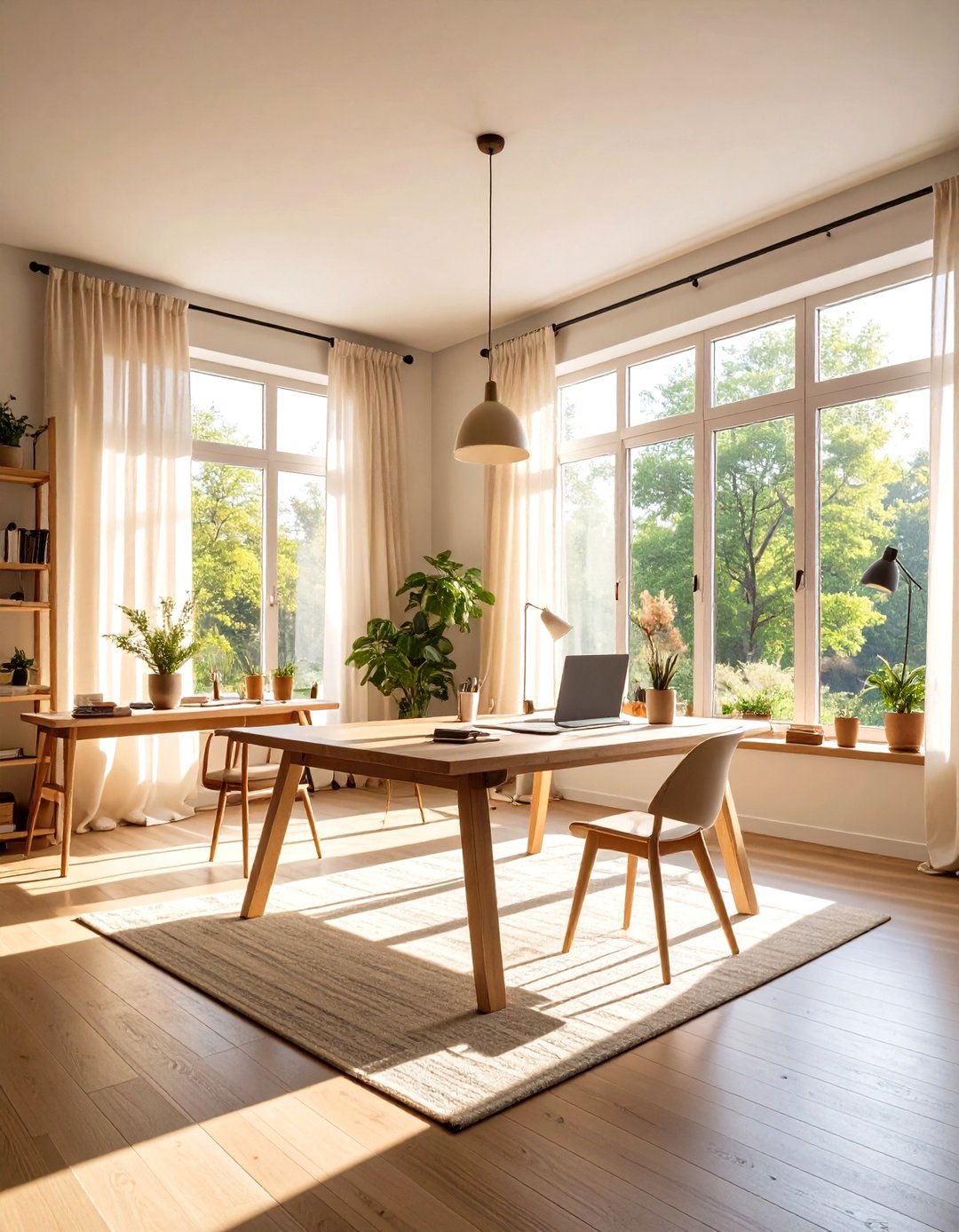
A flood of morning light can awaken creativity faster than any caffeinated brew. Arrange your art room so the main work surface sits perpendicular to the largest window, letting soft side light illuminate sketch lines without producing glare. If exposure is harsh, sheer linen curtains diffuse rays while preserving brightness. Mirrors opposite the panes double daylight and visually stretch small rooms. For evening sessions, pair overhead LED panels with adjustable task lamps to keep the scene consistent. Purposeful placement of natural and artificial light shields eyes from strain and ensures pigments show true.
2. Modular Art Room Zones with Mobile Furniture
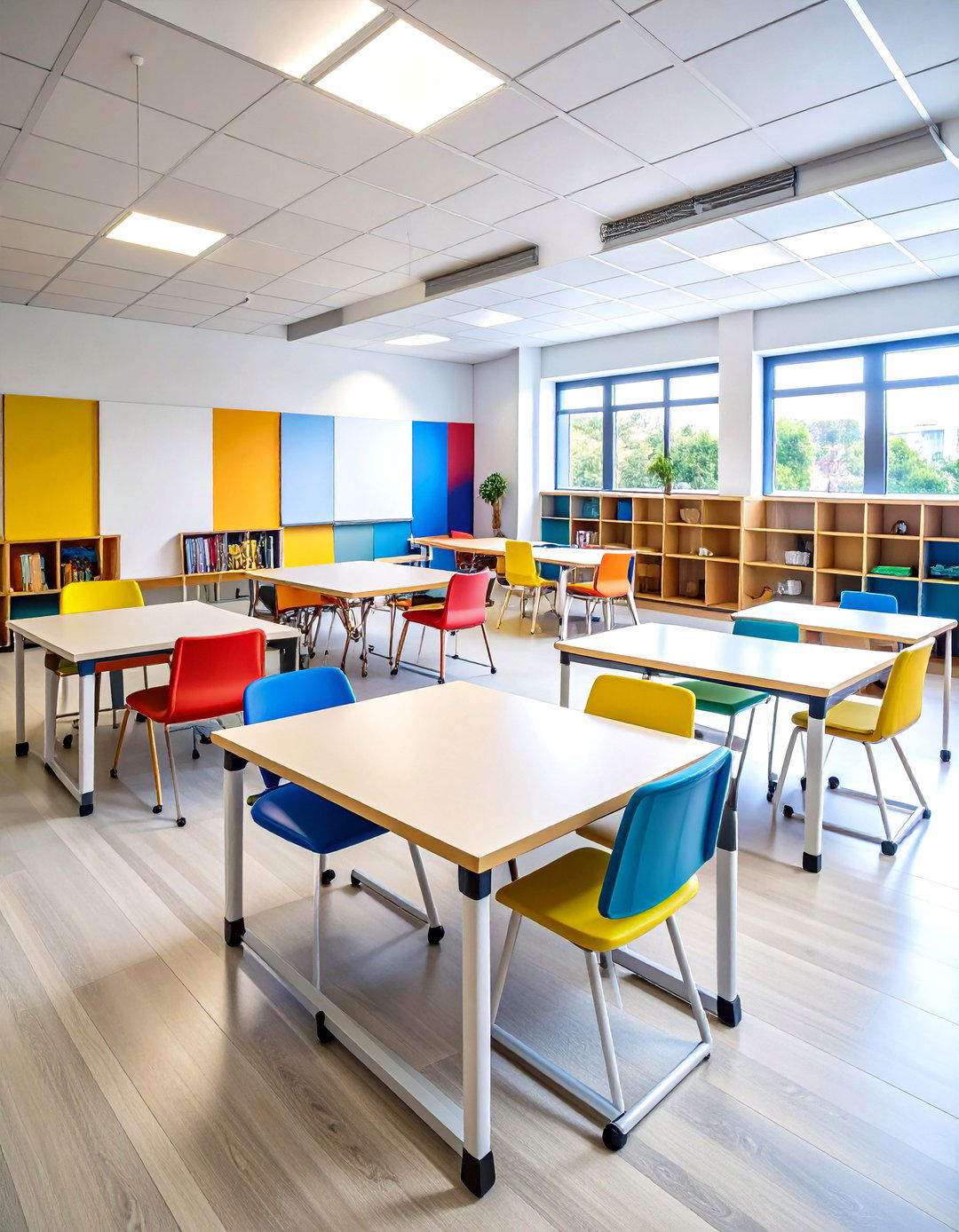
Unlike fixed studio benches, modular tables on locking casters let an art room adapt to every project. Wheel two units together for expansive canvas work, then park them apart to carve out separate watercolor and digital corners. Fold-down side wings provide instant surface area yet tuck flat against the wall when floor space matters. Add stackable stools that slide beneath each desktop to keep walkways clear. A folding screen or rolling whiteboard can quickly define messy versus clean zones, giving mixed-media artists flexible boundaries without permanent walls.
3. Vertical Storage Walls and Pegboard Systems
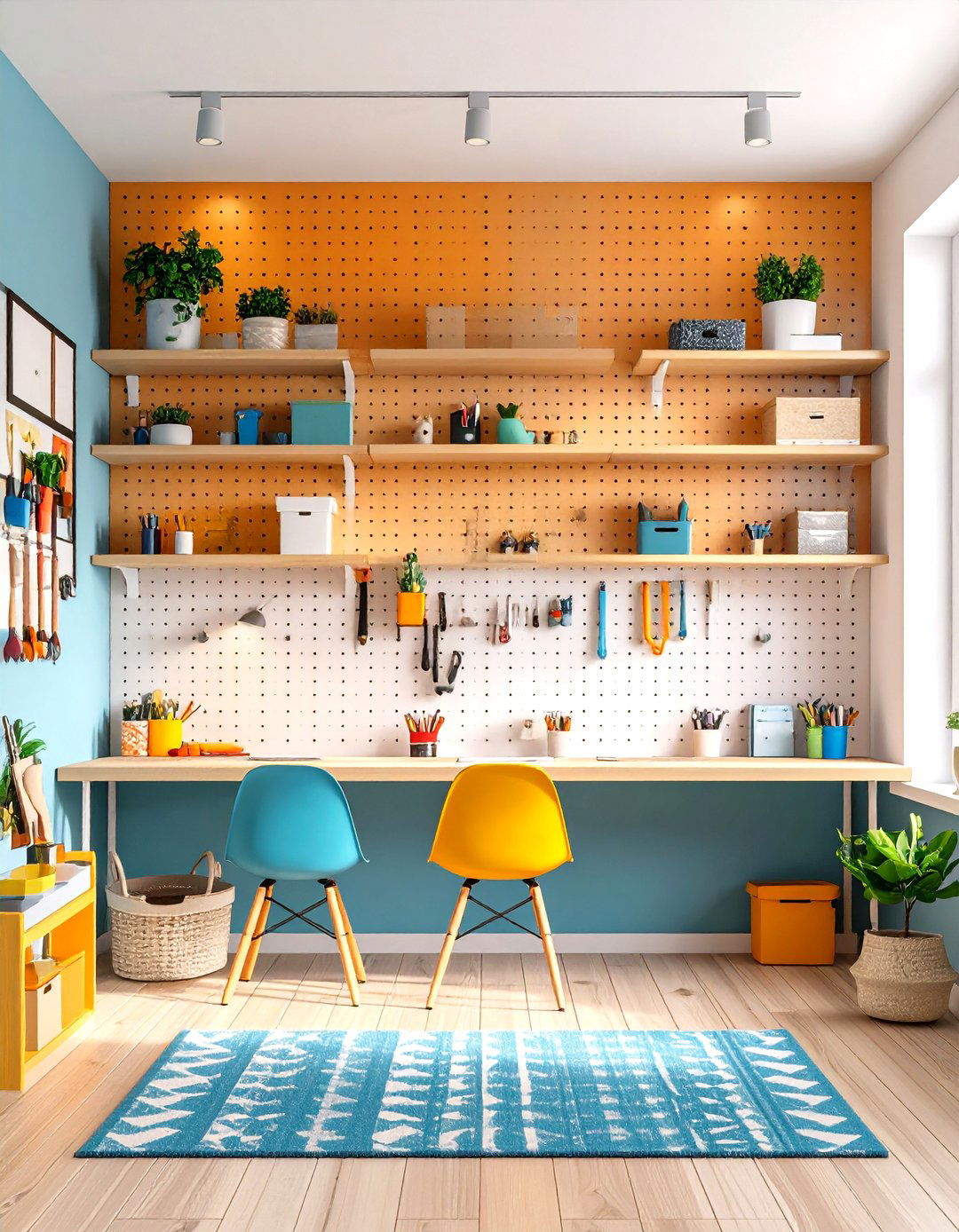
For a compact art room, looking up is smarter than spreading out. Mount a pegboard rail system — think IKEA’s Skådis panels — across one wall to park scissors, rulers, and spools at eye level. Hooks, clips, and shallow shelves snap in anywhere, so your most-used tools stay visible, not buried in drawers. Deeper cubbies above head height can cradle rarely used molds or spray cans, while magnetic strips secure metal palette knives. Label everything with washi tape for quick retrieval, and you’ll spend less time hunting supplies and more time making marks.
4. Biophilic Art Room Corners for Calm Focus
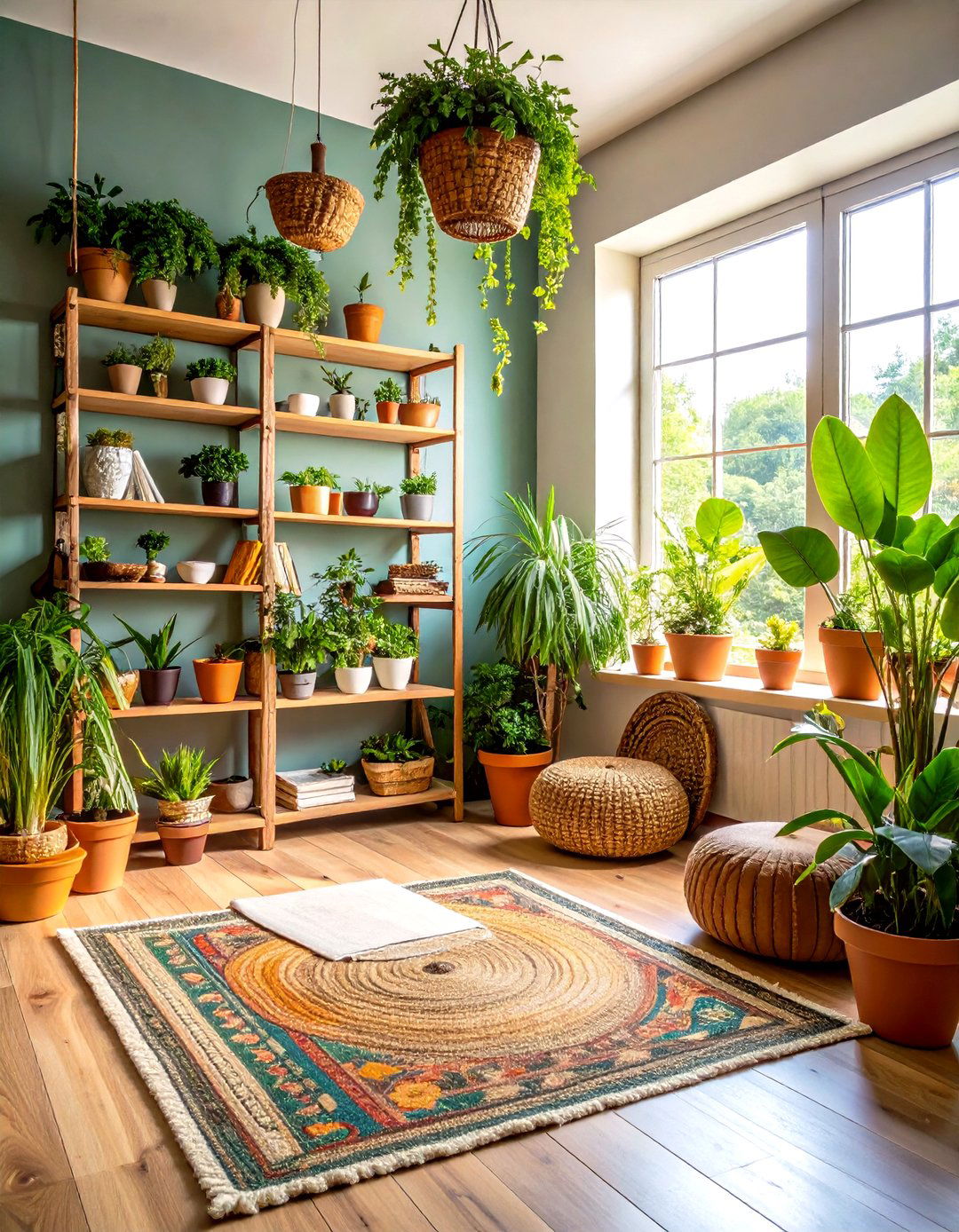
Studies keep confirming what painters already feel: greenery soothes the nervous system and sharpens thinking. Position a cluster of low-maintenance plants — snake, pothos, or ZZ — near your art room entry so you step into living color each session. Hanging planters above a drafting table free floor area while trailing vines frame the view. Complement foliage with natural textures like jute rugs or unfinished pine shelving to echo outdoor calm. The subtle biophilic cues promote longer, more mindful workblocks and remind you to take restorative breath breaks.
5. Sustainable and Reclaimed Surfaces
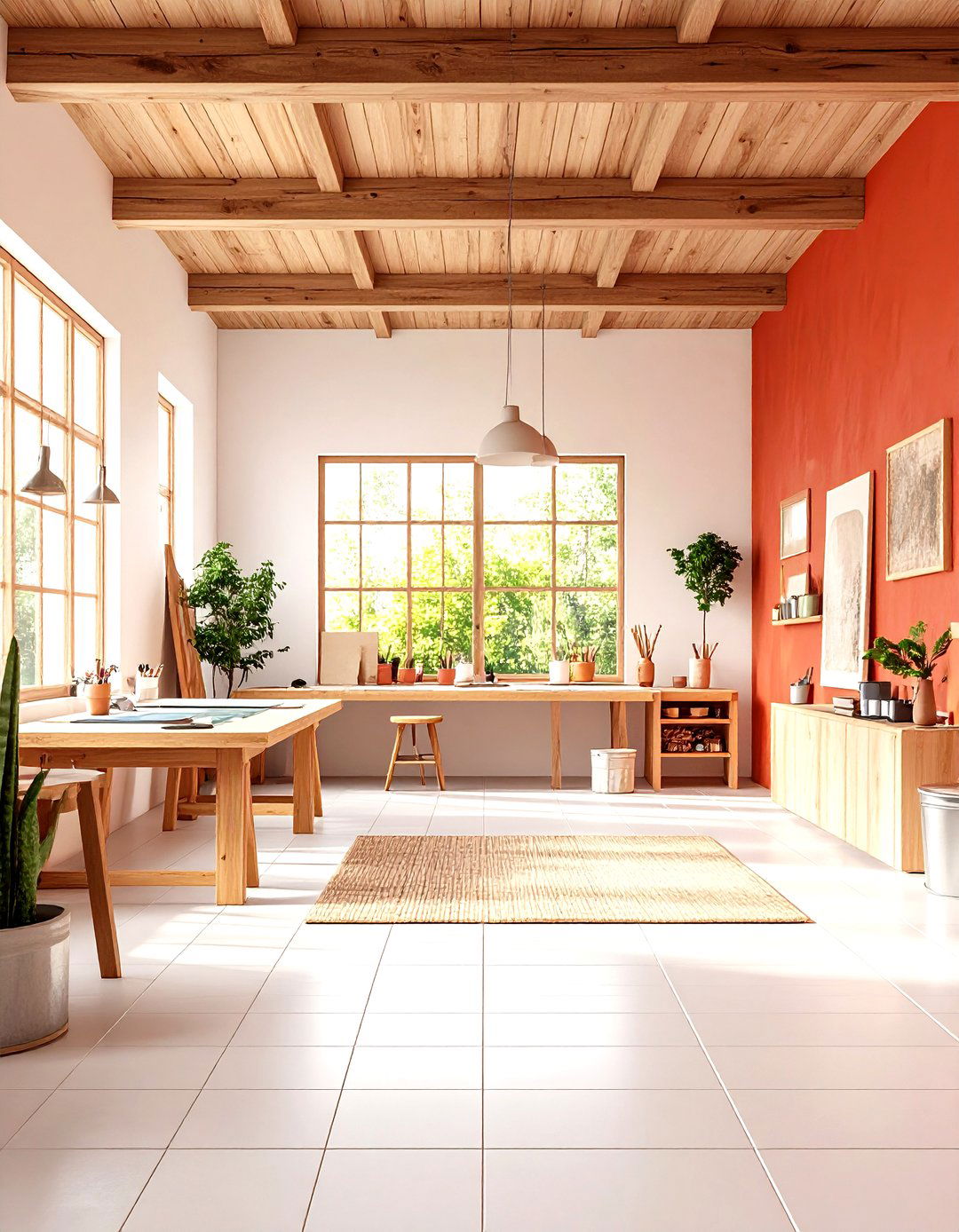
With environmental consciousness growing, an art room built from reclaimed timber or recycled glass tile expresses creativity before the first brushstroke. Sanded pallet boards create rustic easel backs, while cast-off kitchen countertops refitted as workbenches shrug off paint spills. Opt for nontoxic, low-VOC wall paints in the flamboyant but earthy 2025 palettes — warm ochres, desert reds, burnished brass accents — to keep the air clean and vibes energized. Pair these surfaces with bamboo organizers or metal pails found at flea markets; you’ll shrink waste and give materials a second act.
6. Color-Zoned Art Room Inspiration Wall
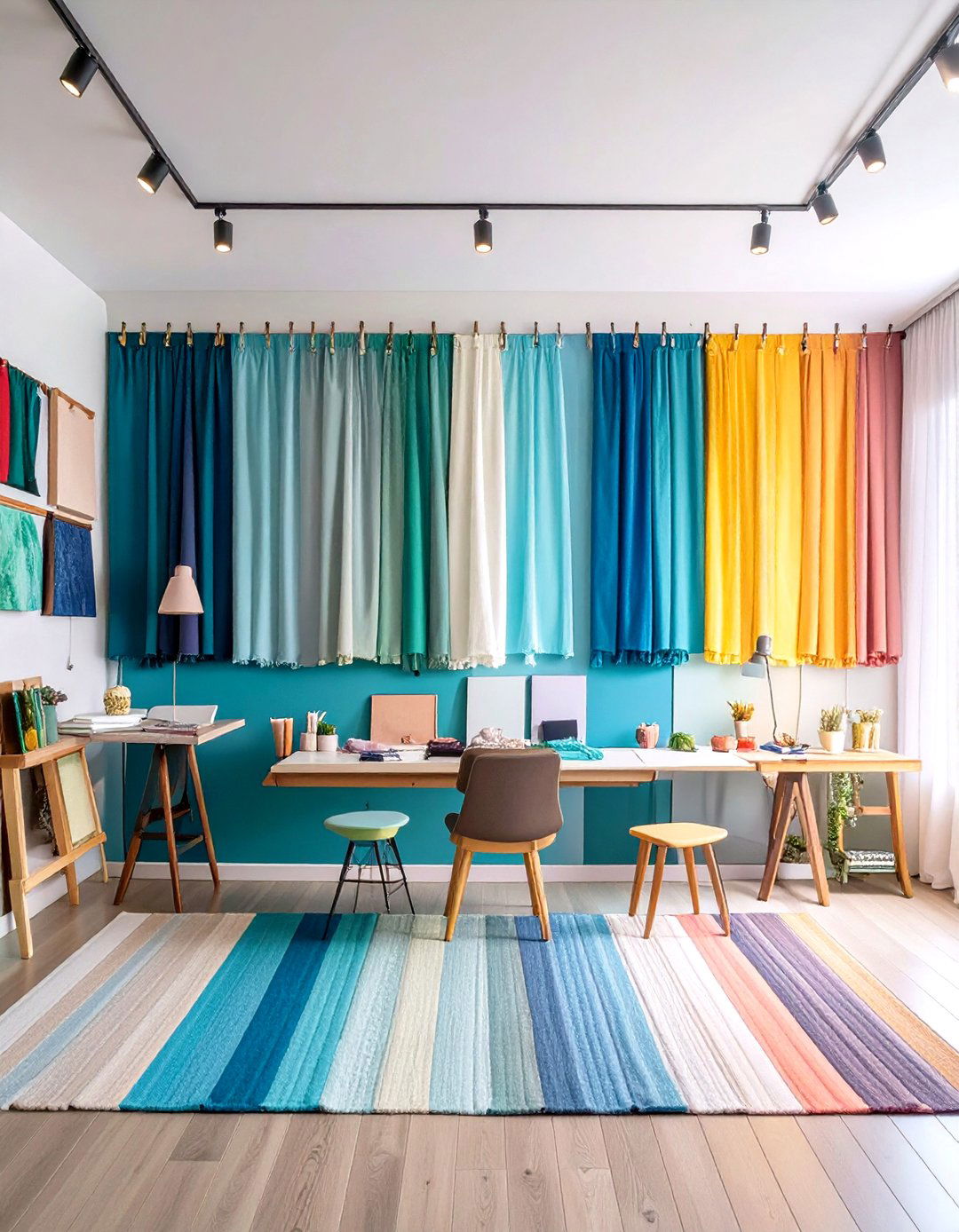
To spark ideas at a glance, devote one wall of your art room to color zoning. Paint broad horizontal stripes — Quietude blue-green fading into Naturally Refined blush, both highlighted as Sherwin-Williams’ 2025 palette leaders. Pin matching swatches, fabric scraps, or small canvas thumbnails below each stripe so future projects have a ready palette roadmap. Magnetic rails let you shuffle samples without nail holes, and LED strip lights tucked at the ceiling wash the gradations with even glow. Every time you glance up, harmonious hues invite experimentation.
7. Transforming Desks for Mixed-Media Flow
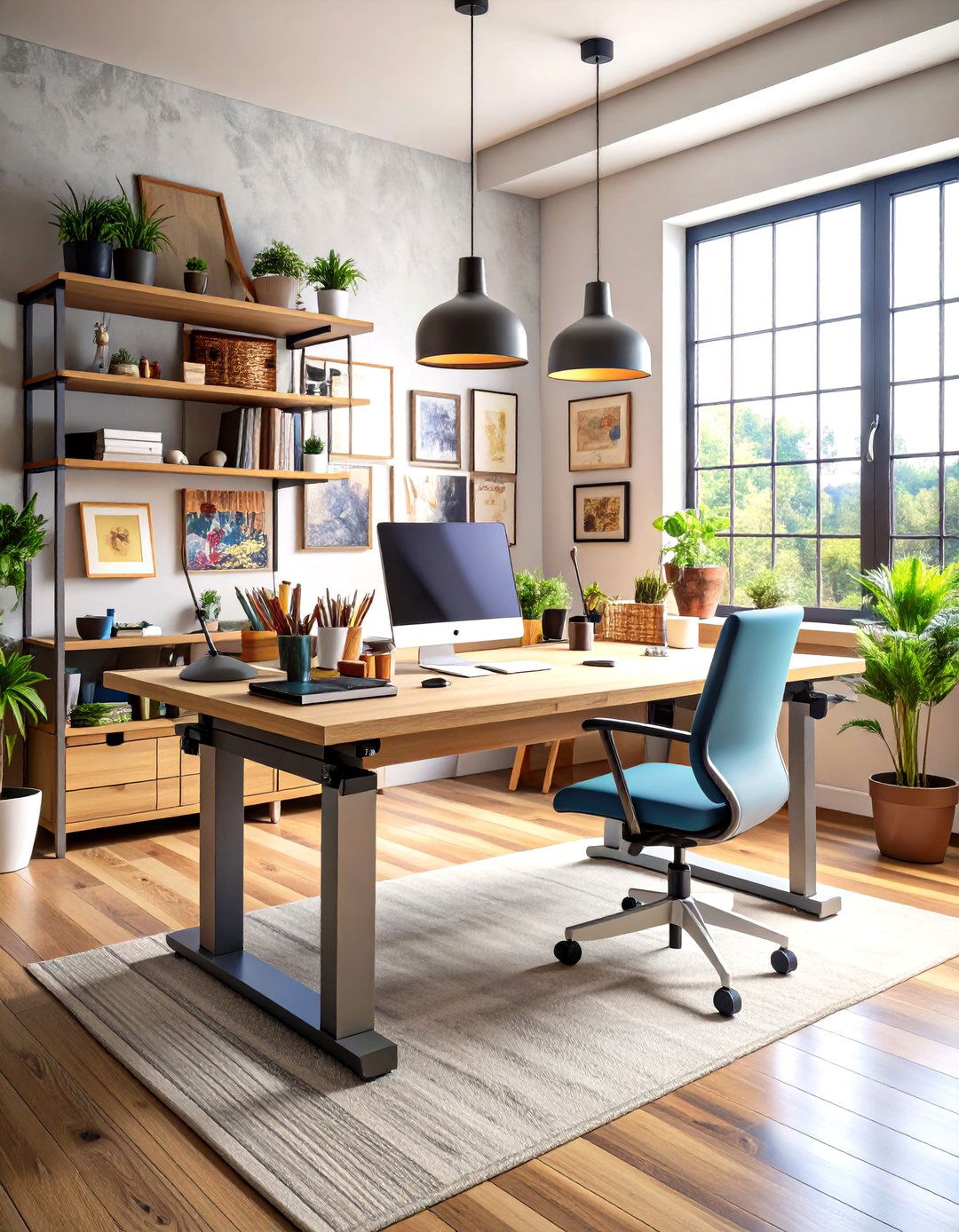
Take productivity cues from modern coworking hubs by introducing a sit-stand, crank-adjustable desk into your art room. Switching posture keeps circulation brisk during long inking sessions and protects your back from hunch fatigue. A hinged drafting board attachment flips upright for sketching, then lays flat for clay modeling. Magnet-mounted side trays clip on or off to hold solvents separate from electronics. Built-in cable channels corral chargers so tablet references stay powered without draping cords across wet paint. The mutable station helps projects evolve as fluidly as your ideas.
8. Smart Lighting Scenes at Your Fingertips
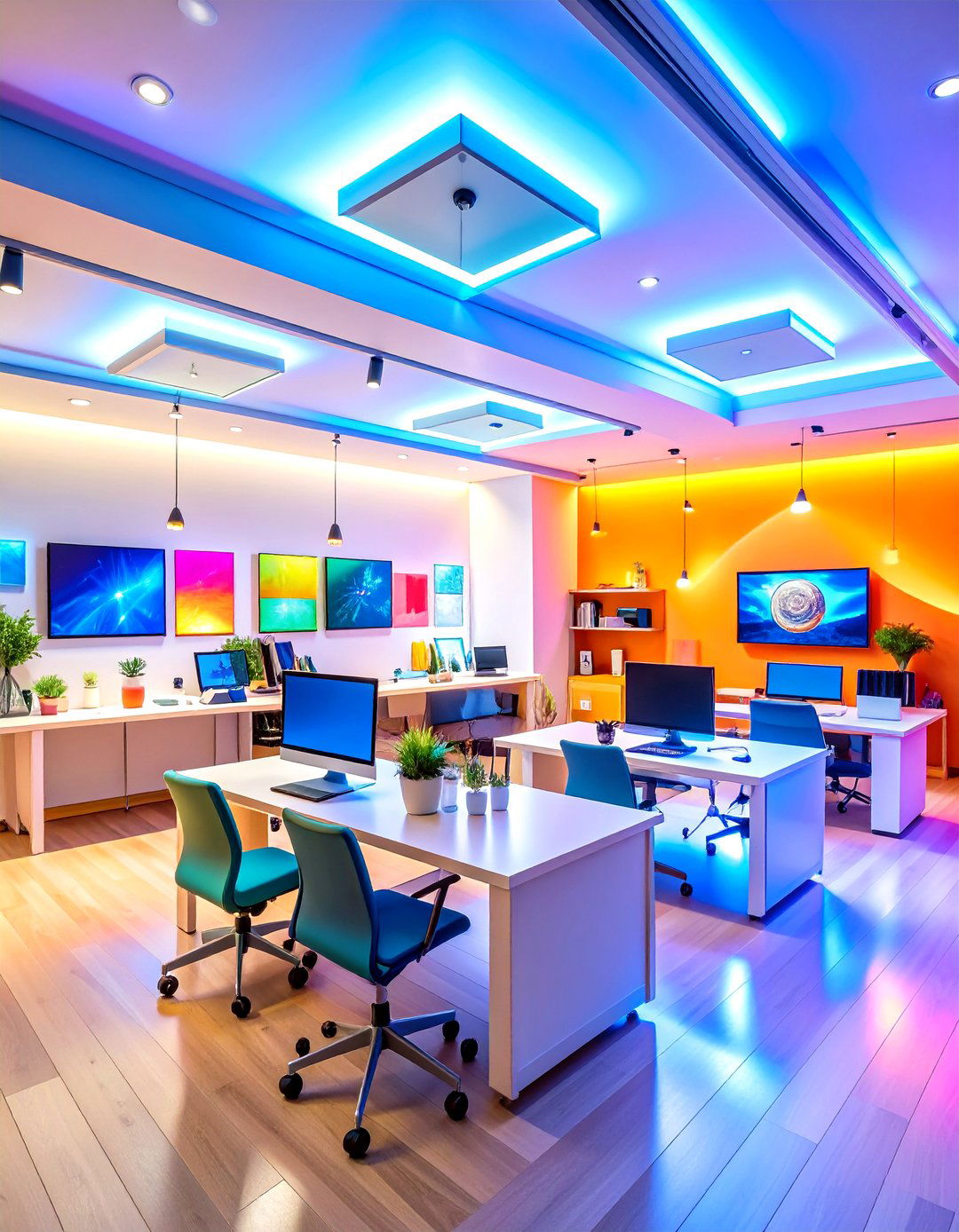
By evening, color perception shifts unless you control the Kelvin. Install Wi-Fi-enabled fixtures that dim and toggle between warm 2700 K glow and daylight 5000 K clarity from a phone slider — exactly the tech highlighted in current interior design trend lists. Program scene presets labelled “Sketch, ” “Varnish, ” and “Gallery” so the art room atmosphere matches each task. Motion sensors near the sink turn on rinse-area spots hands-free, keeping dripping brushes away from switches. Consistent brightness readings make pigment mixing more accurate and nighttime edits less surprising in morning light.
9. Acoustic Comfort with Soft Panels and Drapes
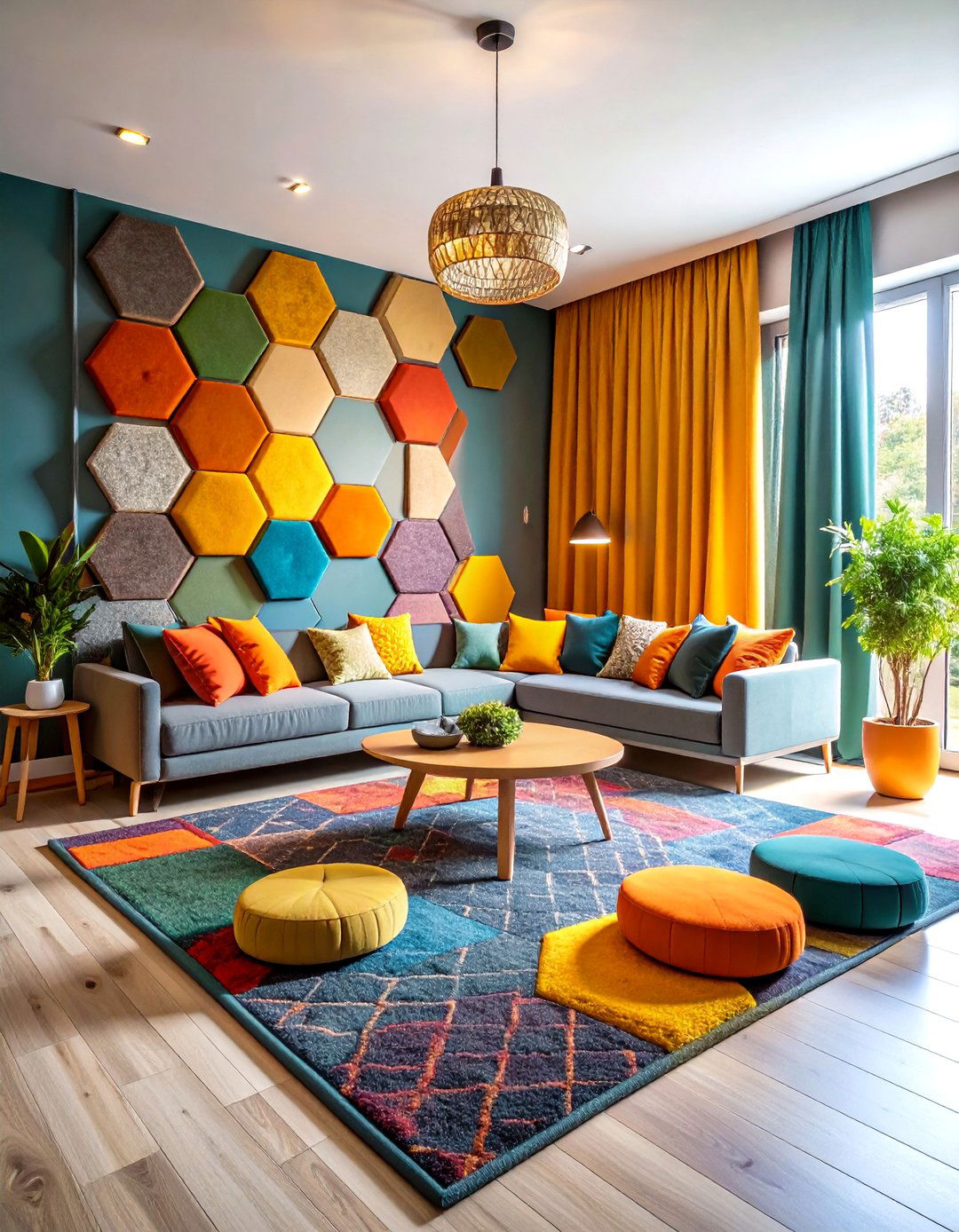
Although many imagine artists thrive in chaos, echoes quickly fray concentration. Line the ceiling perimeter of the art room with fabric-wrapped acoustic tiles in your brand colors, or upcycle thick moving blankets behind canvas storage racks. Floor-length velvet curtains drawn across a closet door both muffle sound and hide supply overflow. For small budgets, stick peel-and-press felt hexagons near noisy windows; the relief from street chatter is immediate. Quieter ambience lets you record process videos without tinny reverb and permits late-night brainstorming without waking the household.
10. Rotating Gallery Rail for Constant Motivation
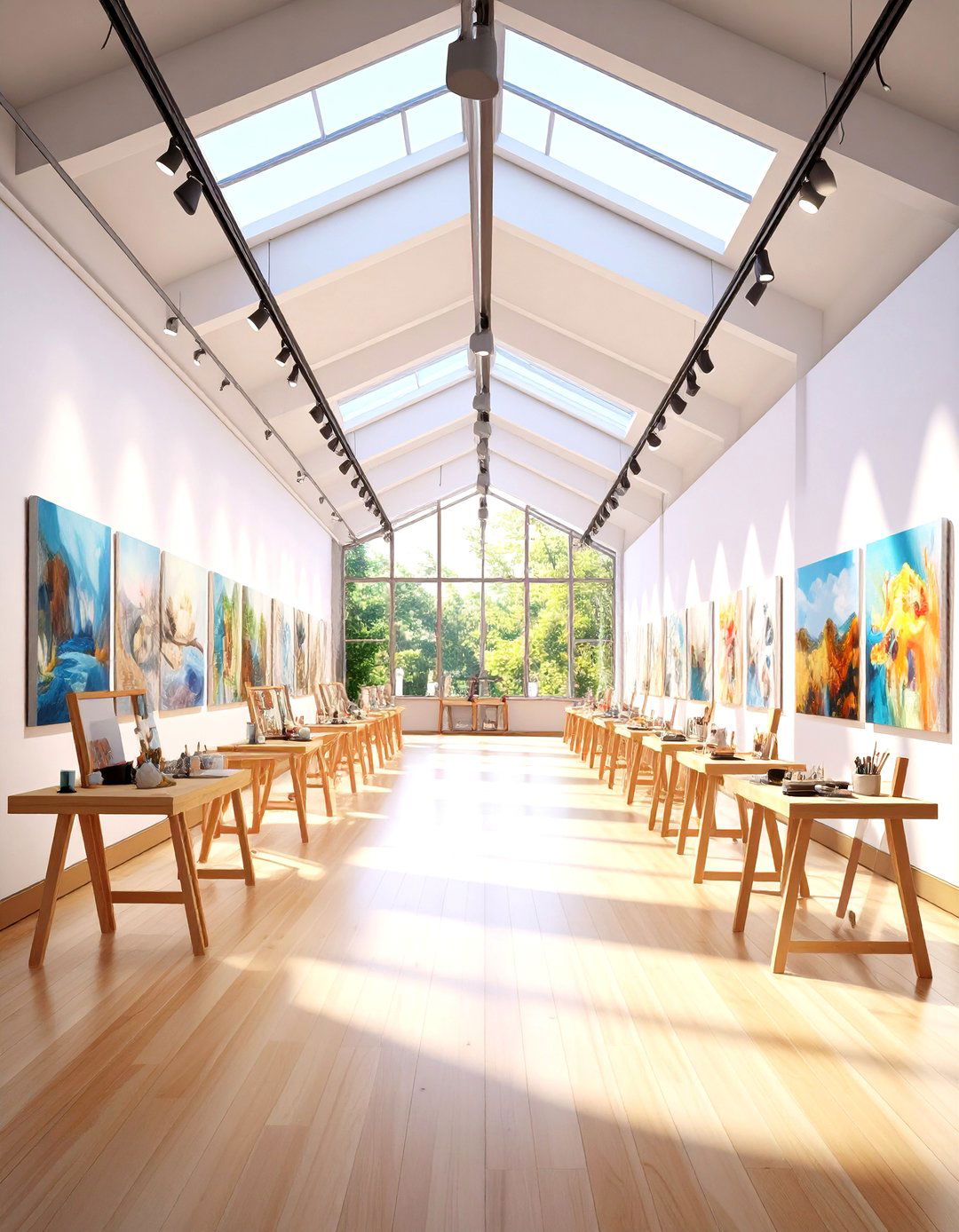
Surprisingly, artists often forget to display their own work. Mount a simple picture-rail system near the ceiling so finished pieces slide along wire drops without new holes. Pinterest’s 2025 wall art mood boards rave about rotating displays to keep spaces fresh. Swap canvases weekly to track your evolution, or hang inspiring pieces by friends when your motivation dips. Clip-on spotlight minis highlight texture, and an appended postcard string lets you pin reference photos beside the final result. Seeing accomplishments around the art room fuels confidence for the next leap.
11. Rolling Cart Command Center
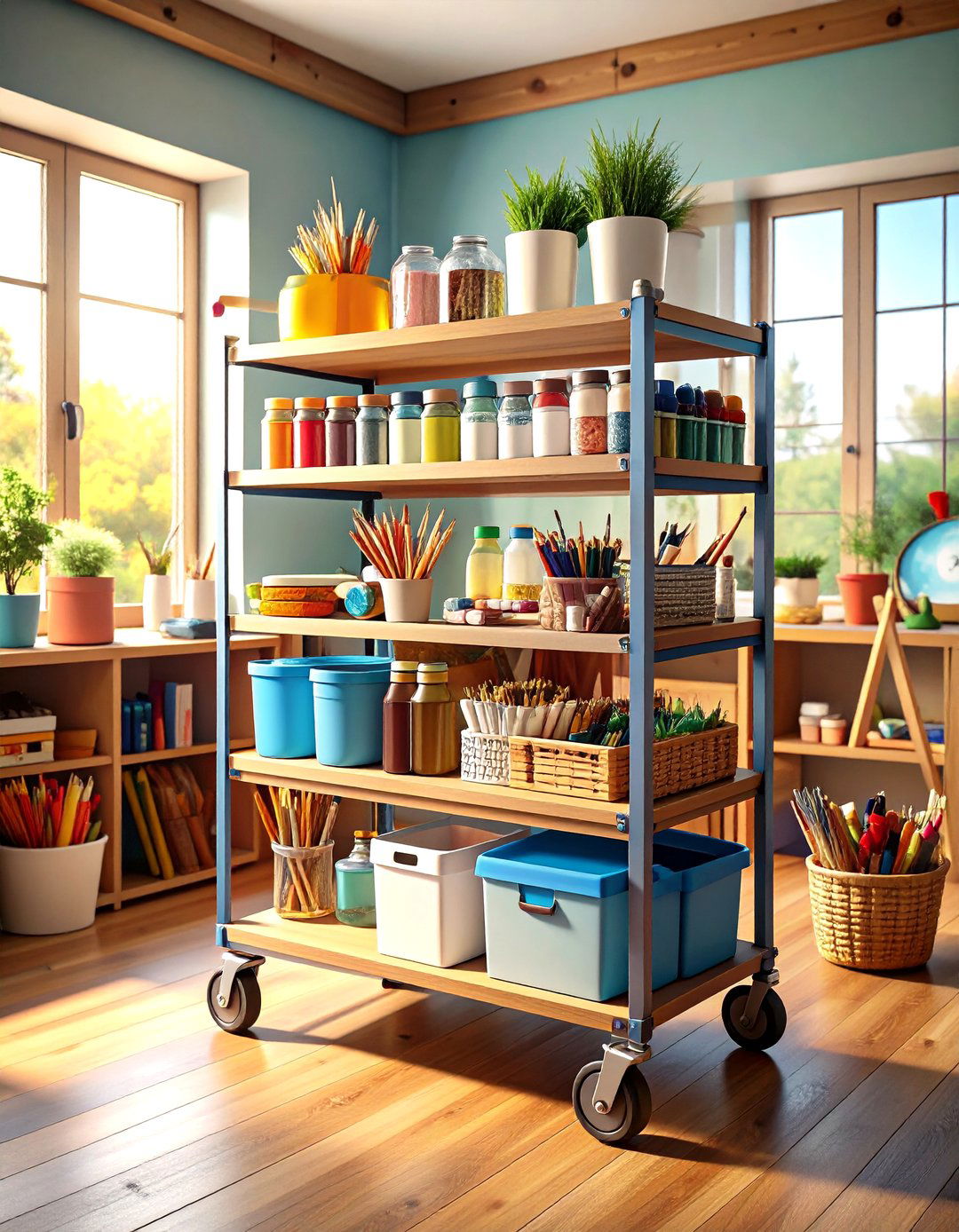
A three-tier rolling cart is the Swiss Army knife of the art room. Stock heavyweight paper pads on the bottom, paint bottles by opacity in the middle, and Mason-jar brush holders up top — exactly the layout touted by home studio instructors. Wheels let you drag essentials to whichever corner you occupy, reducing back-and-forth traffic. Clip a hanging trash bag ring on the side for easy palette-scrape disposal, and magnet a timer to remind you to stretch. When company arrives, roll the organized hub into a closet and the room instantly appears spotless.
12. Clear Acrylic Drawers and Mason-Jar Brush Libraries
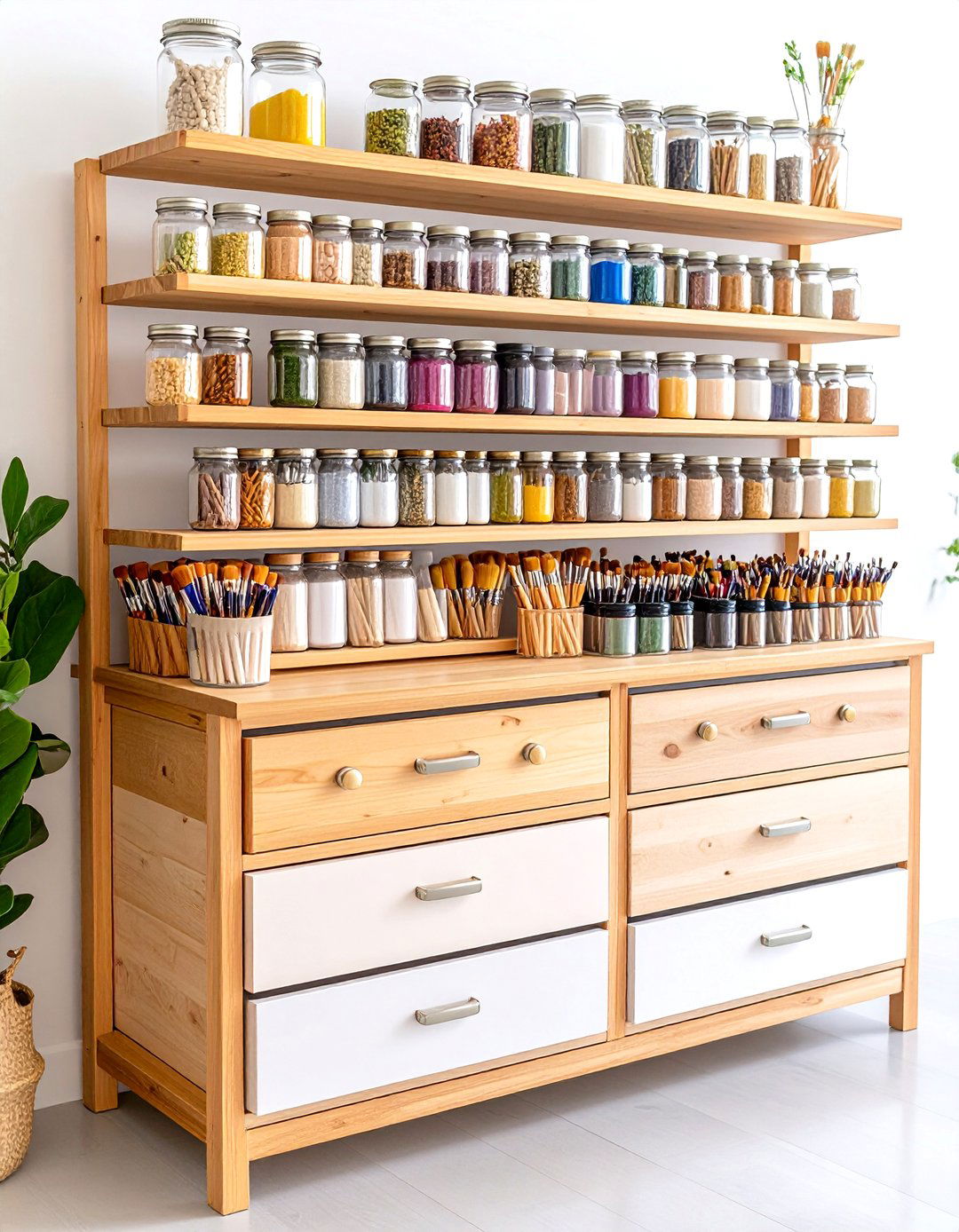
Consider the quiet joy of seeing every nib, blade, and pastel stick at a glance. Stack transparent acrylic drawers along one art room wall so colors shout through without opening lids; the crystal view curbs duplicate purchases and saves rummage time. Above, line recycled Mason jars on a spice rack, grouping brushes by medium — oils, washes, detailers. Glass vessels rinse clean, flaunt handle patina, and cost pennies. Label the jar lips with paint pen dots that match medium color codes, turning storage into a functional spectrum display.
13. Dedicated Drying Shelf Tower

Anyone who paints knows the stumble of smudging yesterday’s nearly-dry canvas. Build a vertical drying tower from wire bakery racks; each shelf grants airflow all around art room creations without hogging worktops. Cheap silicone baking mats drop in to catch drips and peel clean. Number shelves so you can record which layer is curing where, and angle a quiet fan to circulate air through the stack. The stable, gentle environment speeds varnish set times and lets you progress on new pieces while previous layers rest unharmed.
14. Digital Capture Corner for Sharing and Sales
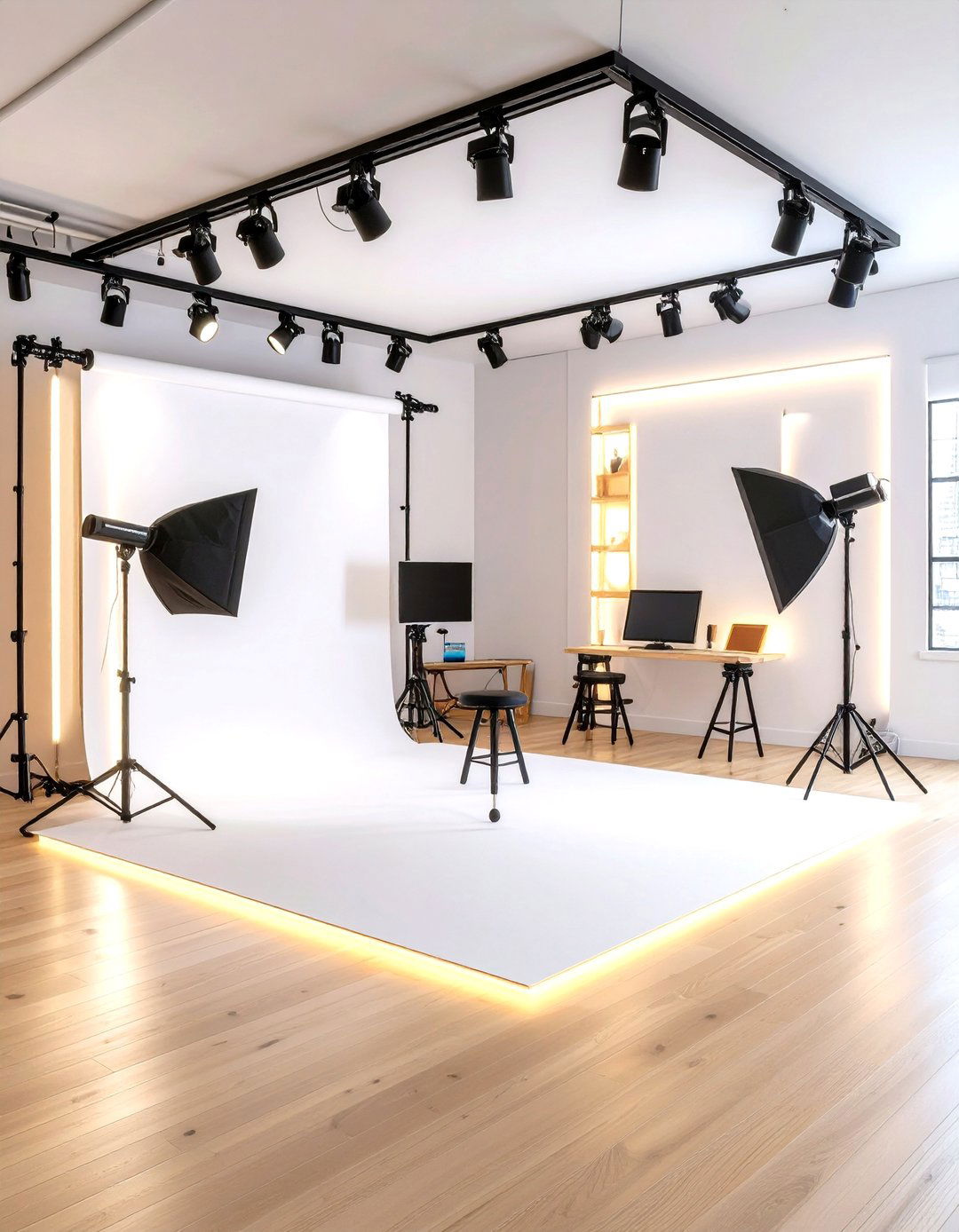
By 2025, online portfolios feel as crucial as physical shows, so carve a tidy photo booth right inside the art room. A collapsible white backdrop clips to a ceiling track; flick a switch and LED light bars reproduce daylight temperatures for color-true documentation. Keep a ring light on a goose-neck arm for detail close-ups and a calibrated tablet for immediate edits. Store a labeled SD-card holder and calibration card in a drawer under the platform so everything has its place. The seamless setup cuts the friction from creation to promotion.
15. Clean-Air Strategy with Ventilation and Purification
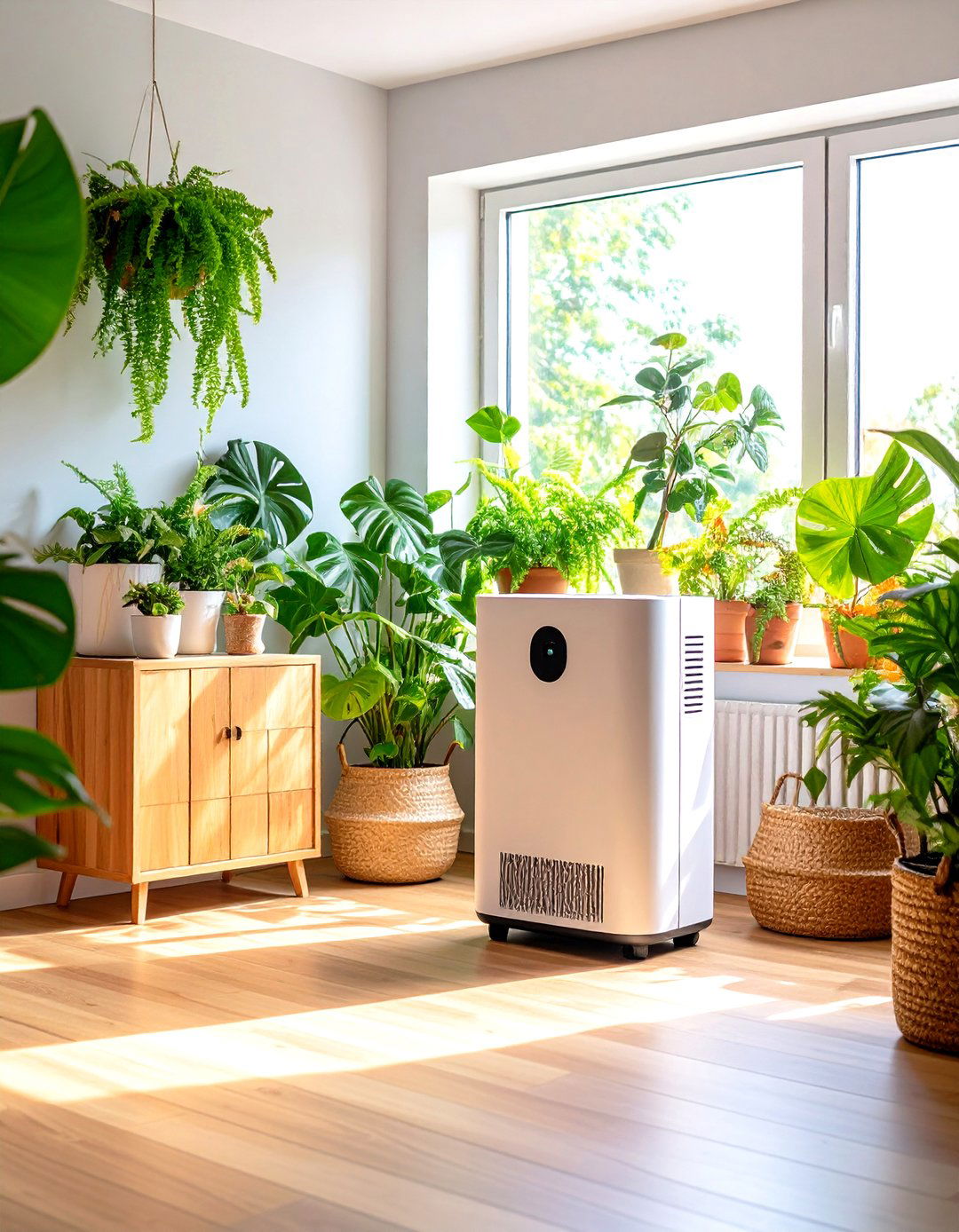
Solvent vapors and paper dust accumulate faster than you think. Equip your art room with a compact HEPA air purifier rated for workshop spaces and set a reminder to replace filters every six months. If fumes are heavier — spray paint, resin — attach a flexible fume hood arm vented out a window through a DIY plywood insert. Pair mechanical help with living allies: Boston ferns and peace lilies absorb small amounts of VOCs while adding lush color. Breathing easy lengthens studio marathons and shields finished pieces from airborne grime.
16. Mess-Friendly Flooring You Can Cheerfully Abuse
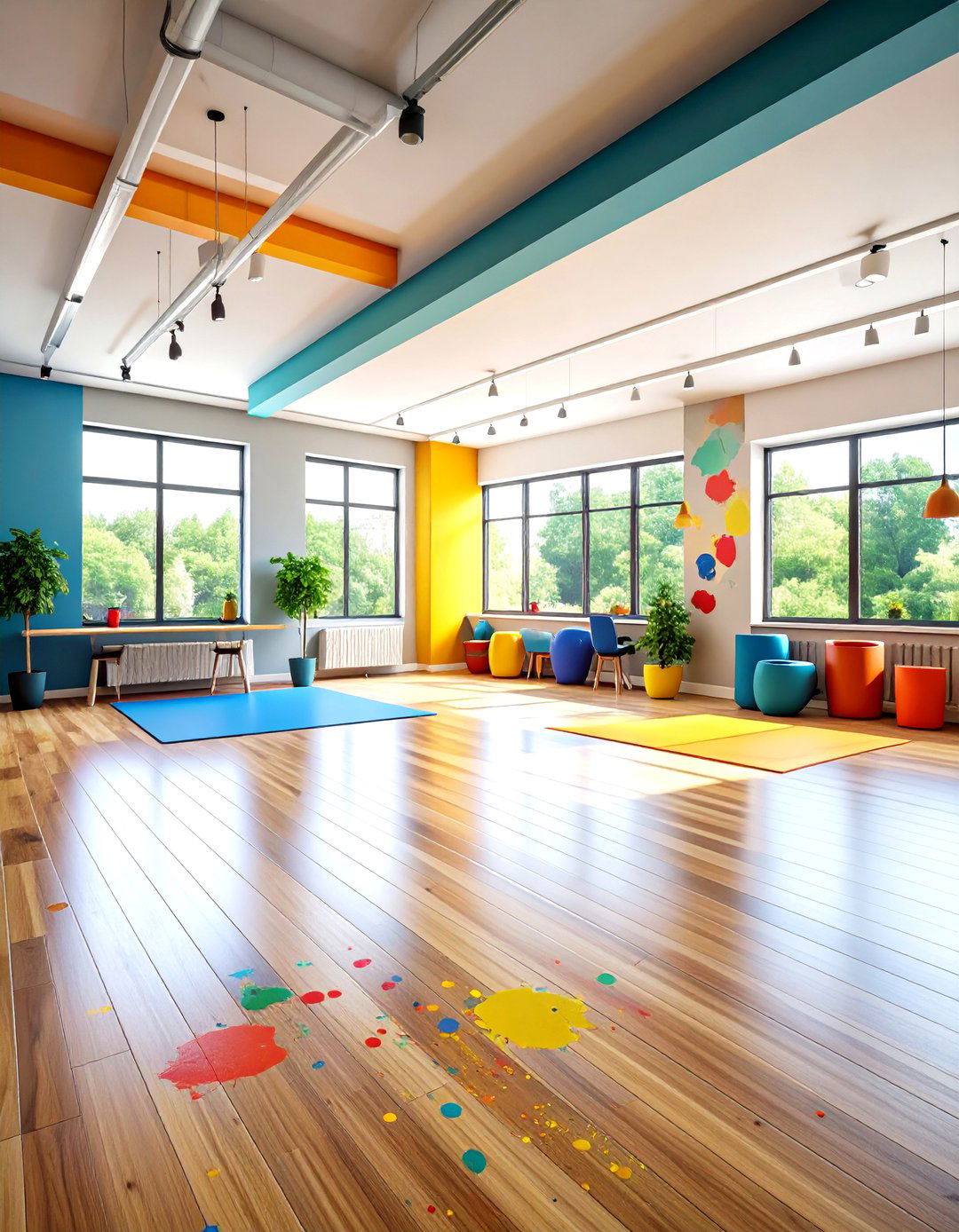
Spilled ink should spark laughter, not panic. Resilient vinyl-plank flooring with a matte stone texture shrugs off chemicals and provides cushioned standing support. Alternatively, seal existing concrete with clear epoxy, then splatter-test in the corner to admire how accidental drips become abstract decor. Lay an anti-fatigue mat beneath the easel for longer painting stints. To make cleanup simpler, install baseboard cove molding so mop water never seeps behind trim. Designing an art room floor you’re unafraid to dirty frees you to experiment bolder.
17. Floor-to-Ceiling Chalk or Whiteboard Wall
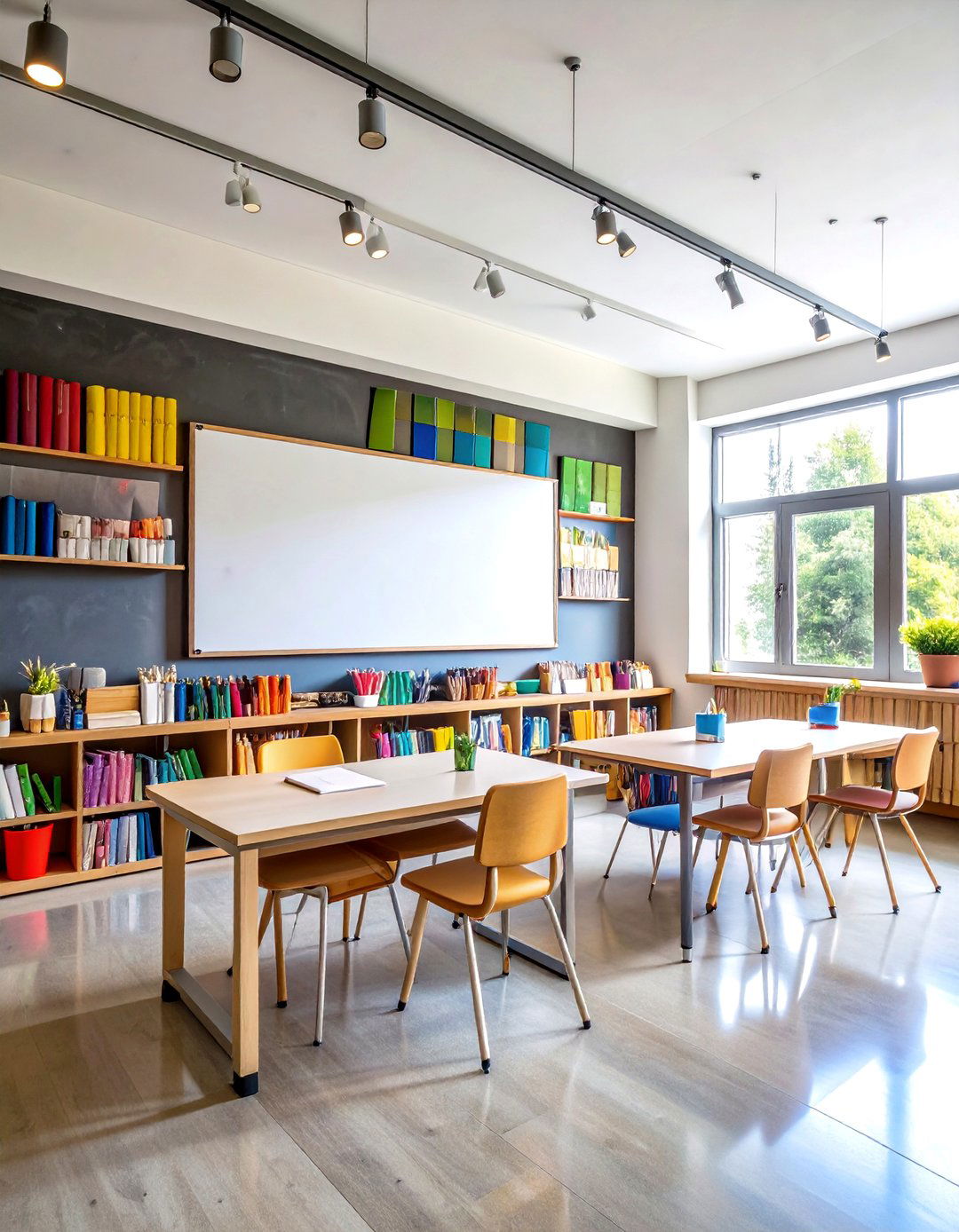
A full-height writable surface turns the art room into a brainstorm arena. Coat one wall with chalkboard paint or mount magnetic porcelain steel panels so you can sketch composition thumbnails at human scale, jot color recipes, or track exhibit deadlines. Tuck the chalk or dry-erase markers in a slim picture-ledge directly underneath to keep tools handy and off the worktable. When inspiration strikes mid-varnish, you can scrawl notes without touching paper. Wiping the wall clean at the end of the day offers a ritual sense of closure.
18. Ceiling-Mounted Pulley Storage for Bulky Items
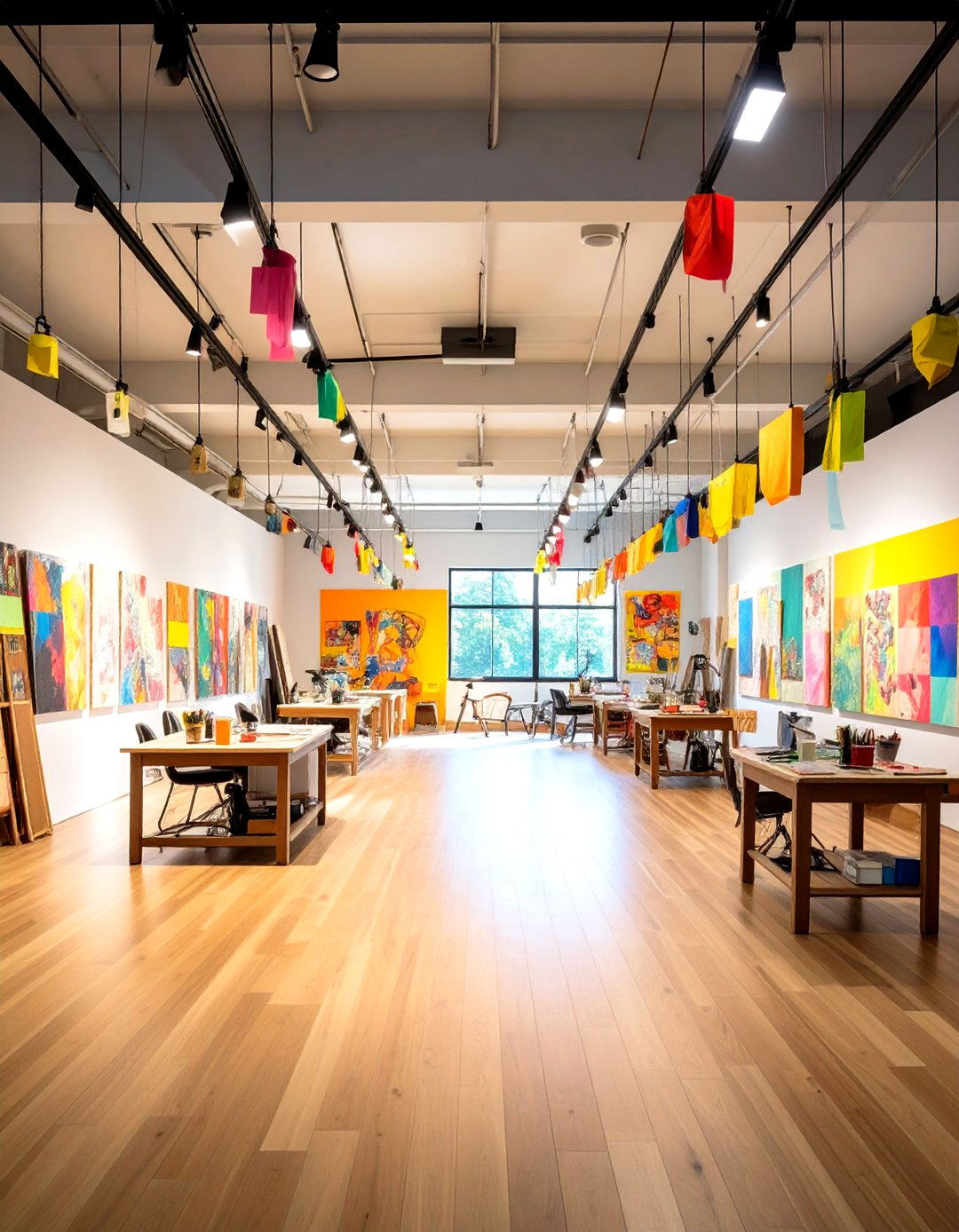
With canvases getting larger, ceilings become underrated real estate. Install a simple bike-pulley hoist system to lift lightweight frames, stretcher bars, or seldom-used photography backdrops up and out of walking lanes. Label each rope cleat so you know which drop corresponds to which item, avoiding tangled lines. Because vertical load spread remains near rafters, floor space suddenly feels double. Add fluorescent safety tags to dangling ends so you never bump your forehead during a midnight dash. This inventive use of volume turns an average art room into a warehouse of possibility.
19. Cozy Reading and Reference Nook
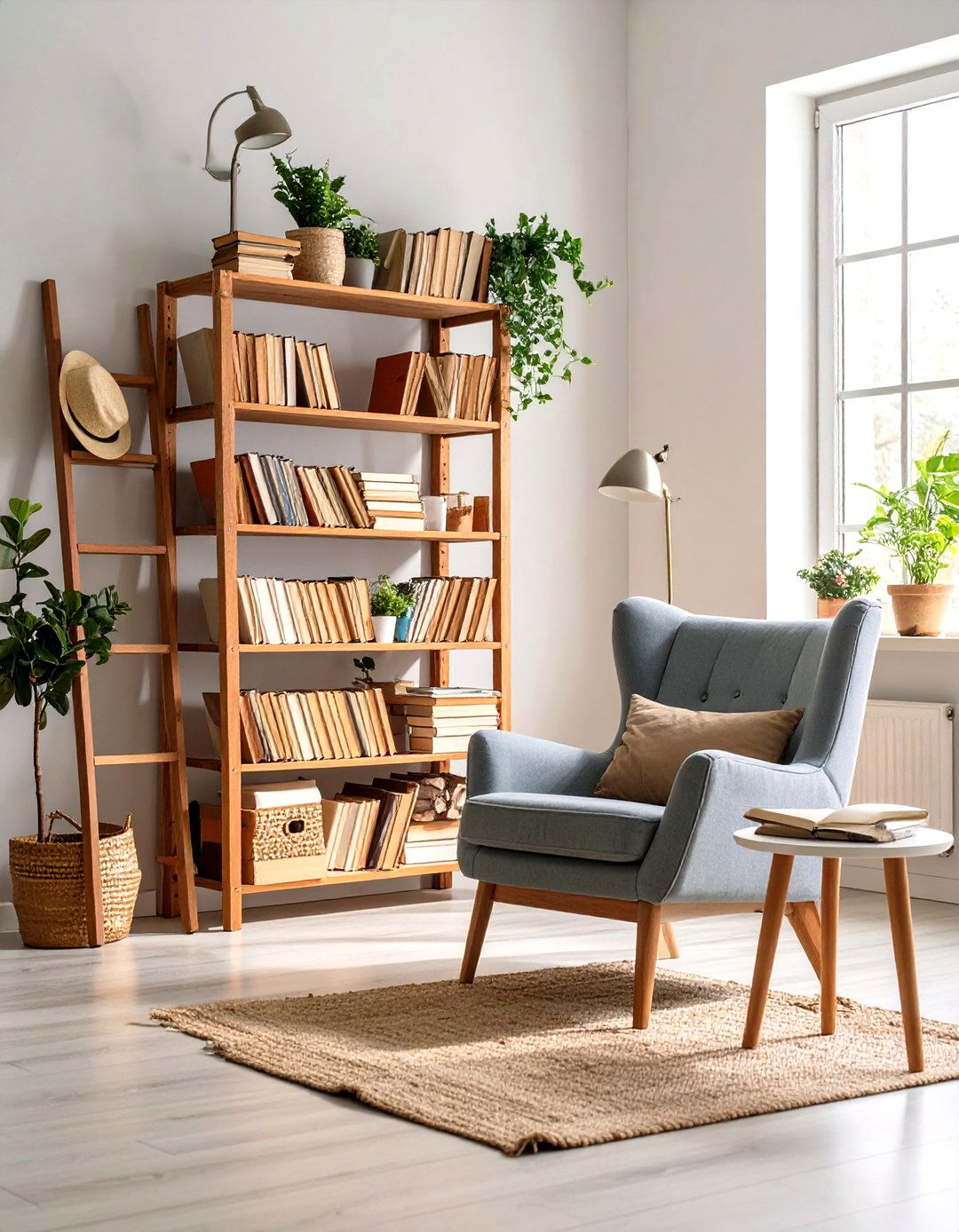
Despite digital convenience, tactile art books ignite imagination. Carve a snug corner in your art room with a low armchair, adjustable sconce, and narrow shelf tower loaded with anatomy guides, exhibition catalogs, and color theory tomes. A rolling ladder rail allows you to reach upper volumes without shaky stepladders. Keep sticky tabs and a notebook in a drawer of the side table so insights migrate swiftly into practice pages. Switching from making to absorbing within the same environment nurtures a balanced creative rhythm.
20. Collaborative Inspiration Wall for Community Spark
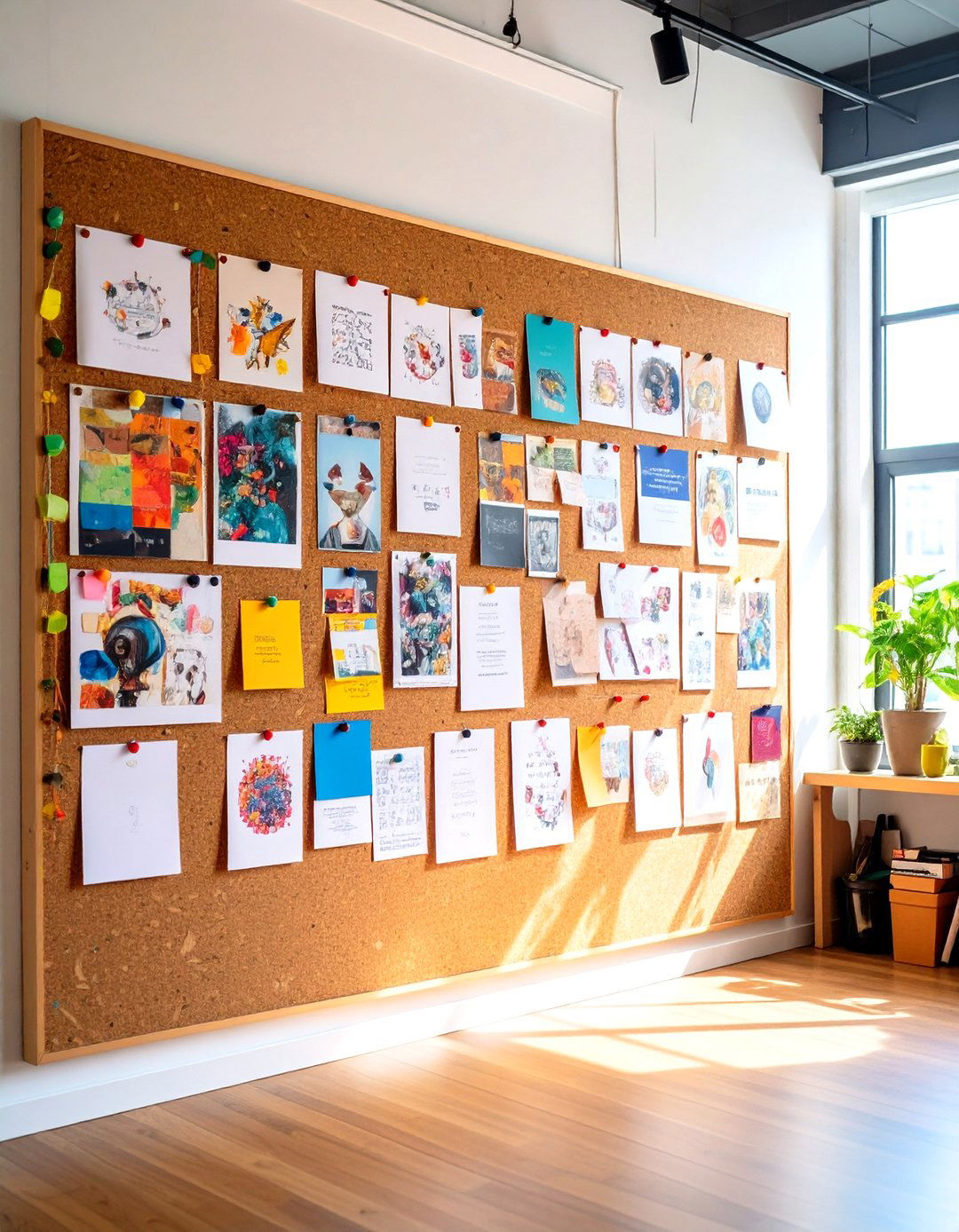
Creativity blossoms in dialogue, so dedicate a corkboard expanse where visiting friends can pin small works in progress, quotes, or critique notes. Provide colored strings and pushpins so themes weave together visually, turning feedback into an evolving artwork. QR codes linking to each contributor’s portfolio invite deeper dives. Rotate the board monthly and archive snapshots in a digital folder to track collective growth. The collaborative wall transforms a solitary art room into a communal incubator, reminding you that every masterpiece belongs to a wider conversation.
21. Ever-Evolving Mood-Board Rail
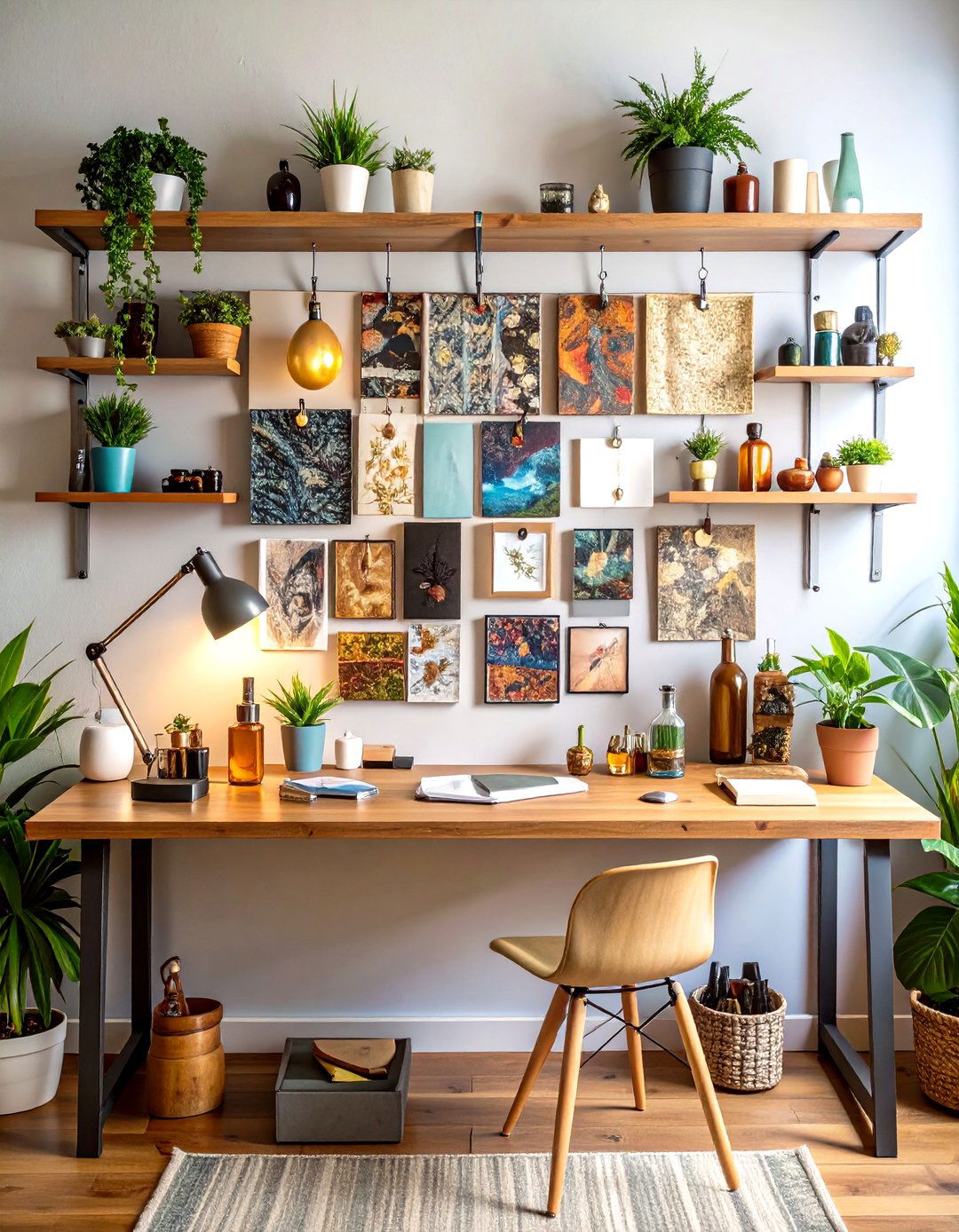
Unlike the bigger collaborative board, this slim metal rail serves your personal aesthetic compass. Clip fabric cuttings, leaf skeletons, Pantone chips, and travel photos above the main desk; built-in magnets let you switch items in seconds without tape residue. Sort elements by upcoming project themes so the art room visually whispers “next step. ” Add a mini shelf for essential oils or textured stones that match the imagery to engage multiple senses. When the rail overflows, photograph it and start anew; archiving ensures inspiration never disappears for good.
22. Immersive VR/AR Creation Corner

As virtual reality tools mature, sculpting and painting in 3-D space becomes more affordable. Clear a two-meter square zone of your art room, cover walls with soft foam tiles, and mount ceiling hooks to keep headset and controllers off dusty surfaces. A dedicated mini-PC with a high-end GPU sits on a ventilated shelf nearby, and blackout curtains block glare on lenses. Switching between tactile canvas and digital infinity broadens skill sets and sparks cross-media experiments, all within the same four walls.
23. Reference Library Shelving with Sliding Glass Doors
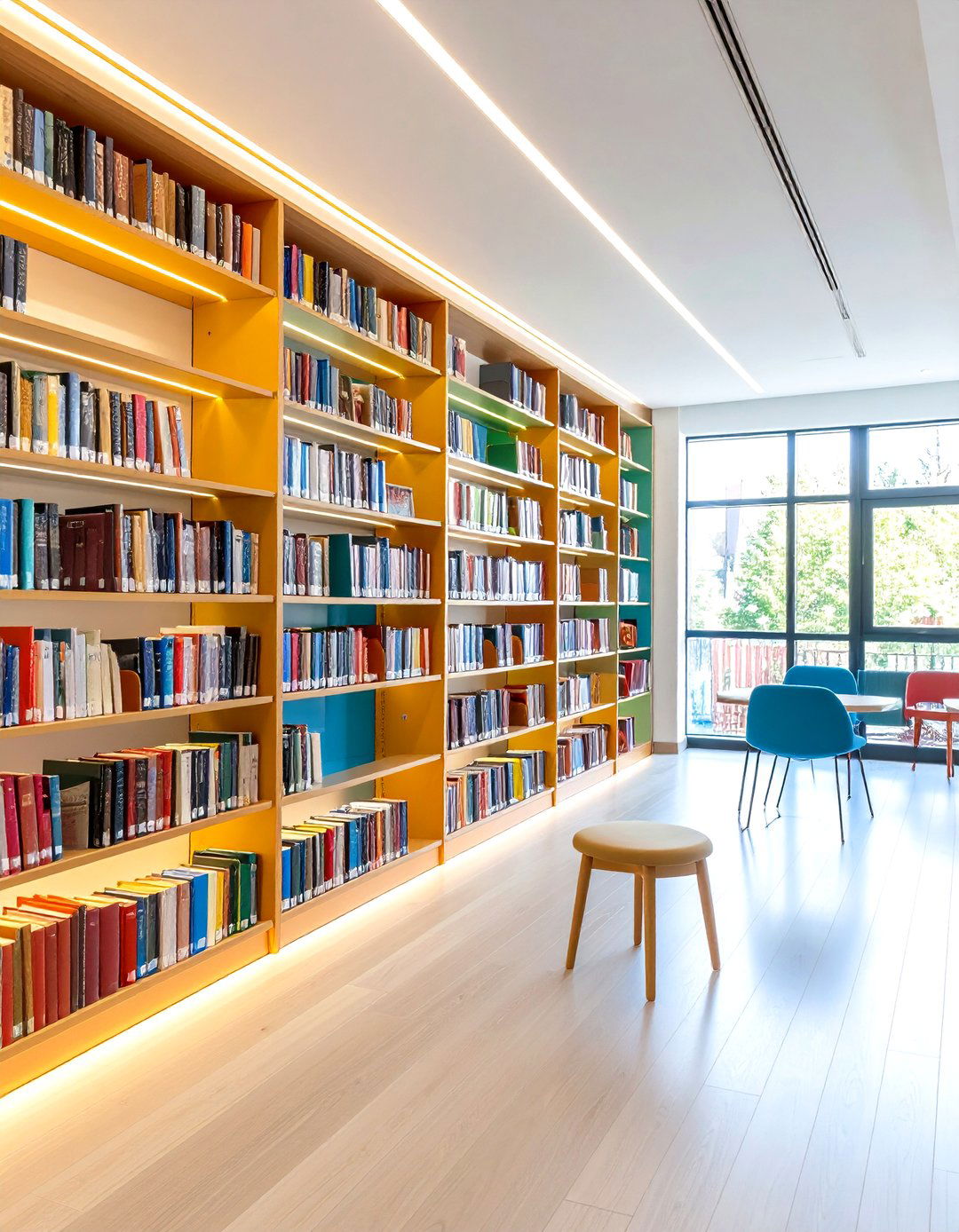
Open shelving collects pigment-laden dust, so protect precious monographs and sketchbooks behind sliding glass. Install adjustable shelves so larger atlases stand tall while pocket notebooks nest in bins below. LED strips integrated along the vertical supports cast even light without drying pages. Place a minimalist stool in front so you can pull several volumes at once and spread them across the seat without overcrowding the worktable. This organized, dust-free library within the art room keeps critical knowledge reachable and preserved.
24. Patio or Balcony Spill-Out Studio

When weather cooperates, roll a lightweight easel through French doors and let natural breezes ventilate turpentine fumes. A weatherproof storage bench keeps water-based materials safe outside, and folding café tables hold palettes. String solar fairy lights overhead for twilight sketching, echoing biophilic design’s call to merge indoor and outdoor creativity. Always stash a microfiber cloth near the threshold to wipe shoes before re-entering, preserving interior flooring. The option to migrate between art room and open air fights cabin fever and sparks new color perceptions.
25. Color Palette Display Station
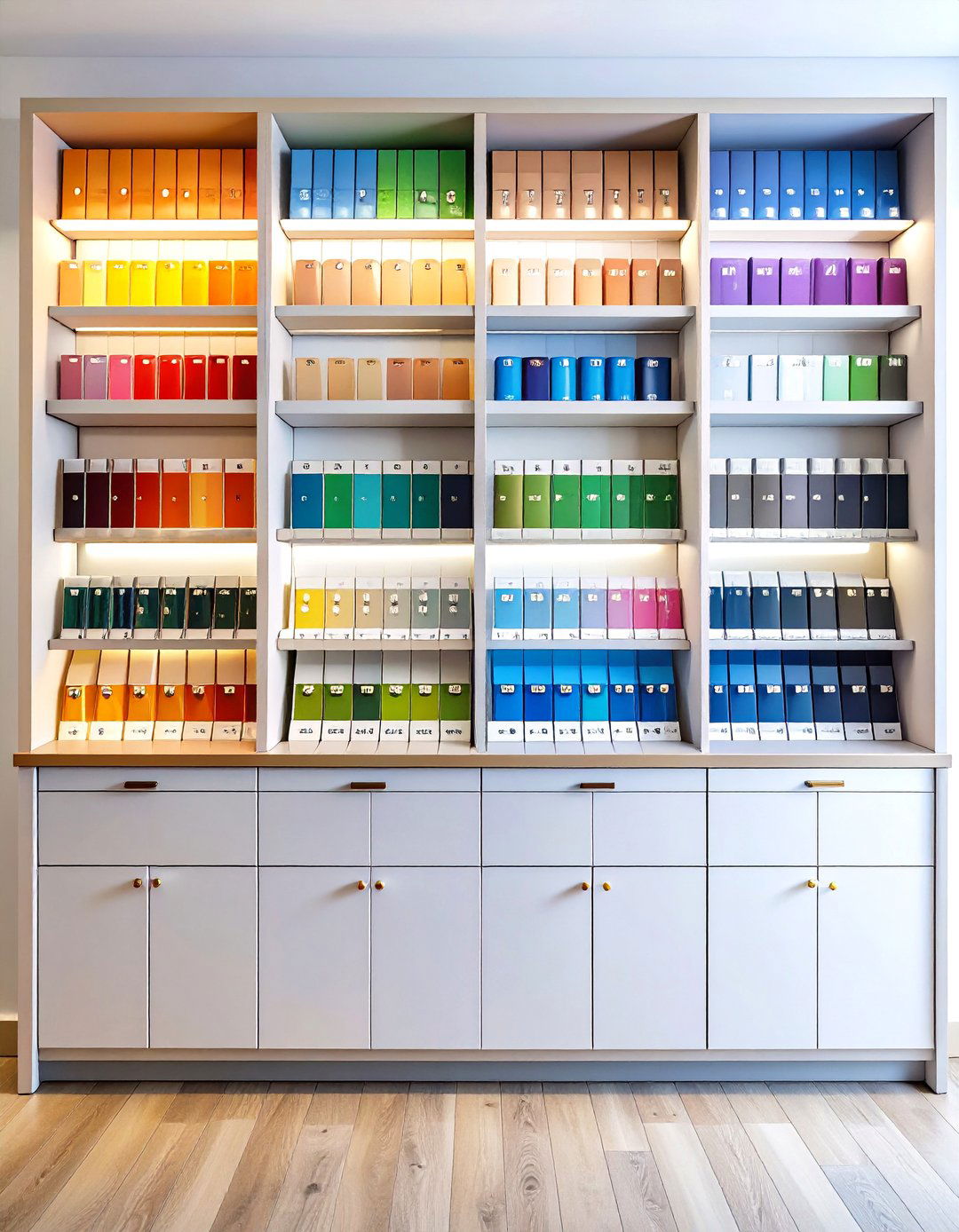
Keeping harmonious hues visible prevents mid-project doubt. Mount a shallow shadow-box cabinet near your mixing area and arrange swatch cards from the 2025 color families — earthy neutrals mixed with flamboyant brights — side by side for instant comparison. Incorporate tiny LEDs along the inside edge so colors remain accurate under night conditions. Store hole-punched paint chips on binder rings below, labeled with mixture ratios for replication. This dedicated palette hub turns an art room into a live color laboratory where every new shade earns an archival spot.
Conclusion:
Art rooms thrive when design celebrates both order and imaginative chaos. From daylight tricks and rolling carts to biophilic nooks and VR playgrounds, each idea pairs practical function with sparks of delight, ensuring the space works as hard as you do. Integrating sustainable materials, trend-forward 2025 color palettes, and community-minded touches elevates an ordinary studio into a sanctuary that nourishes mind, body, and craft. Choose the concepts that resonate, layer them gradually, and watch your art — and your joy in making it — expand within walls built to empower creative freedom.


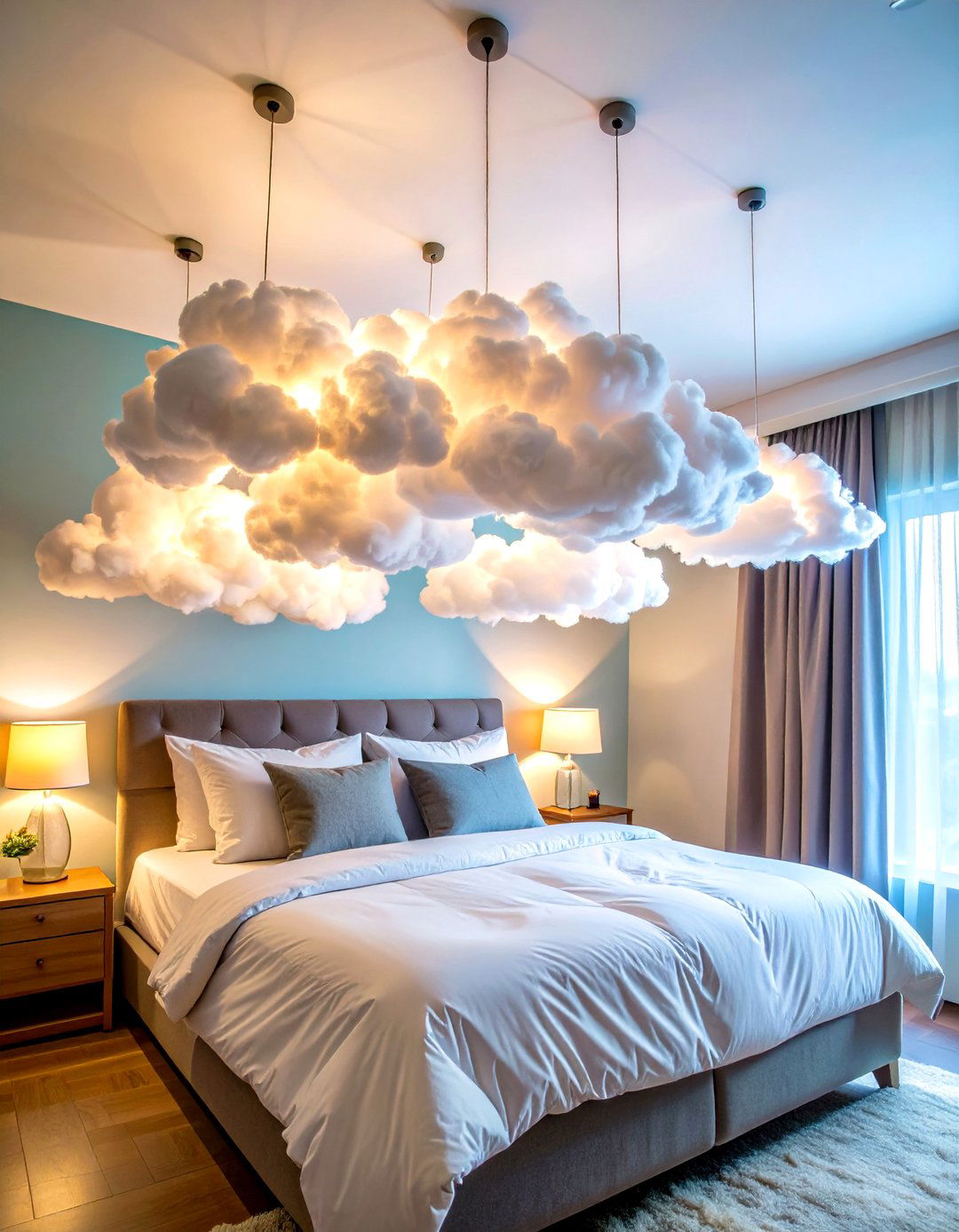
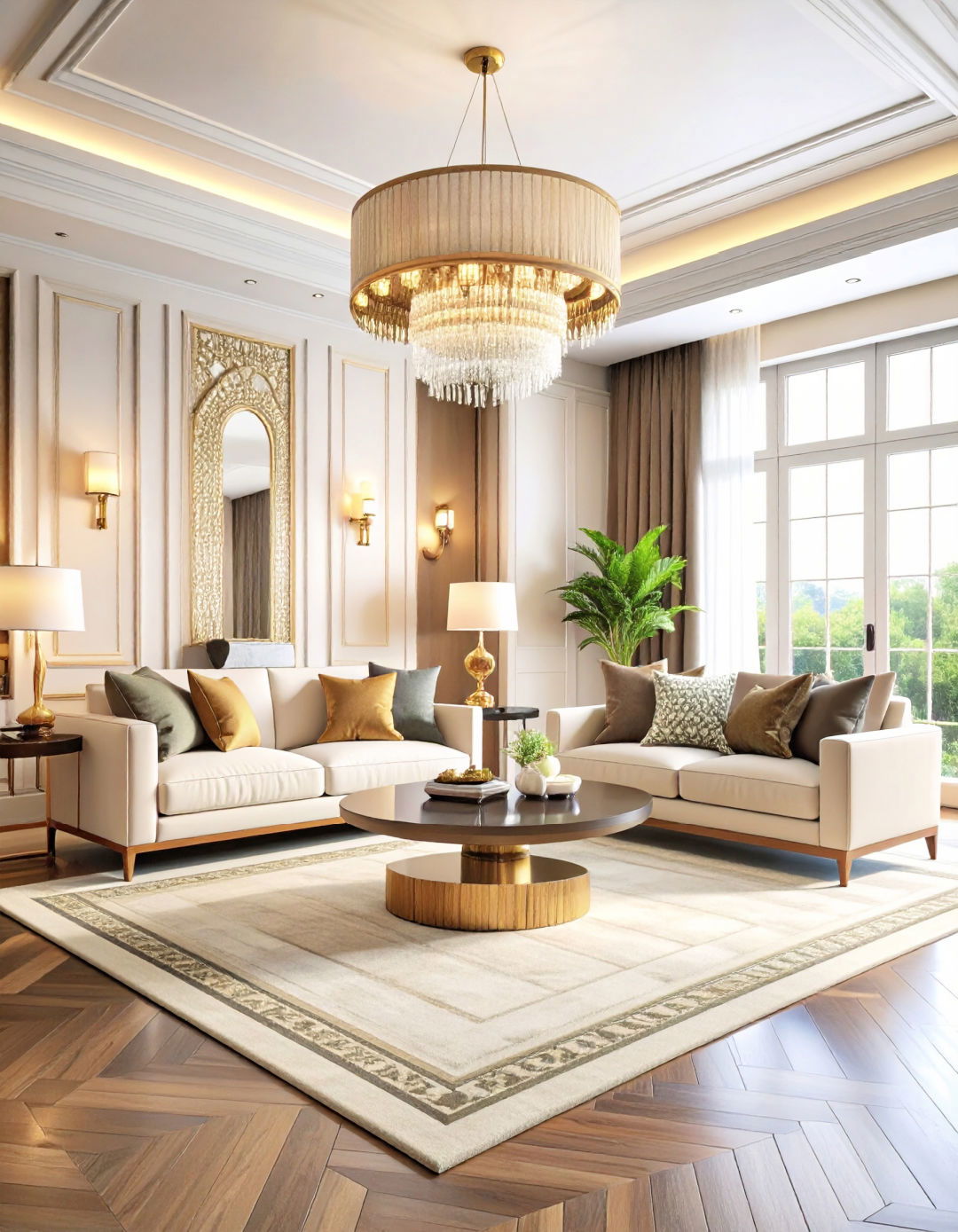
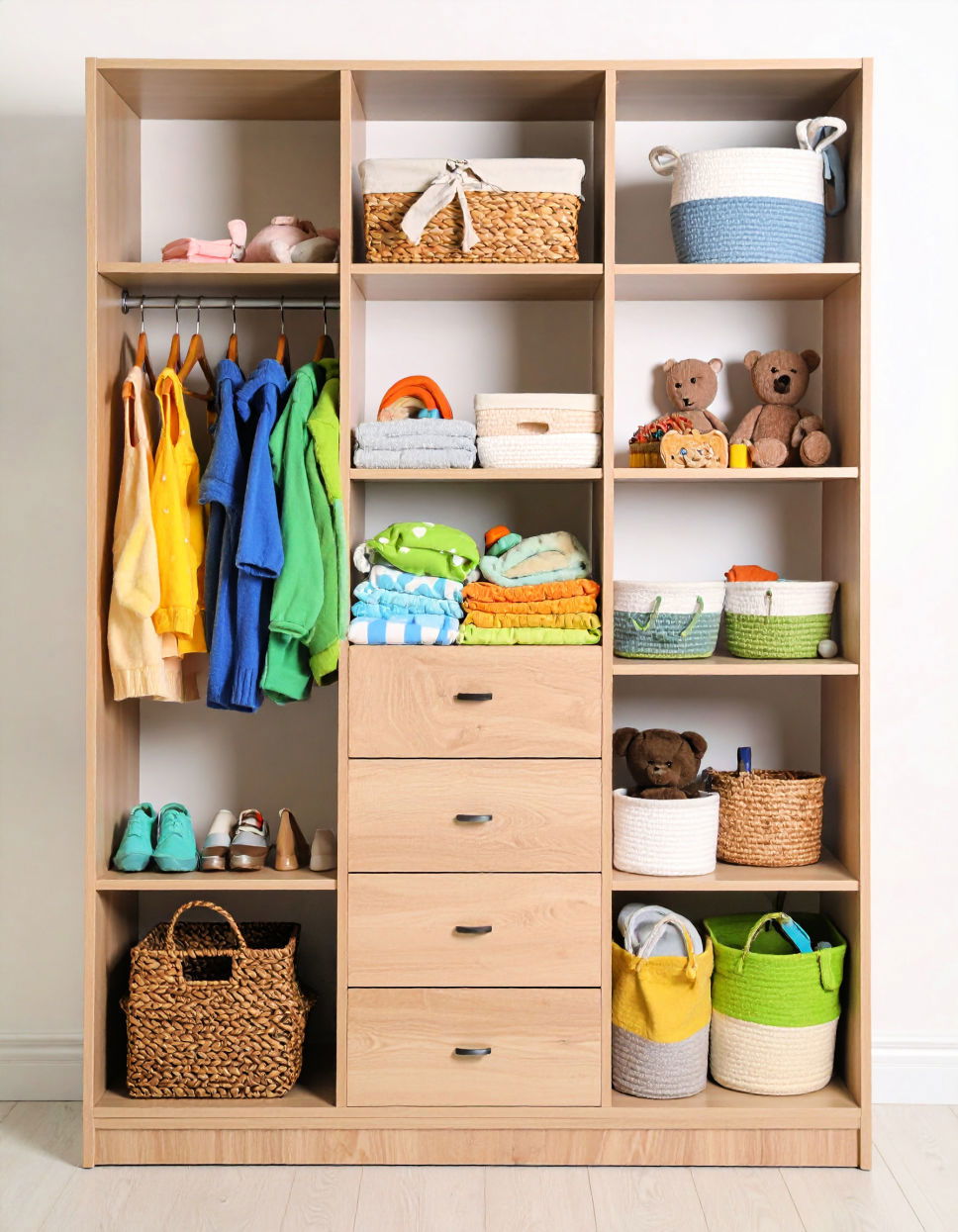
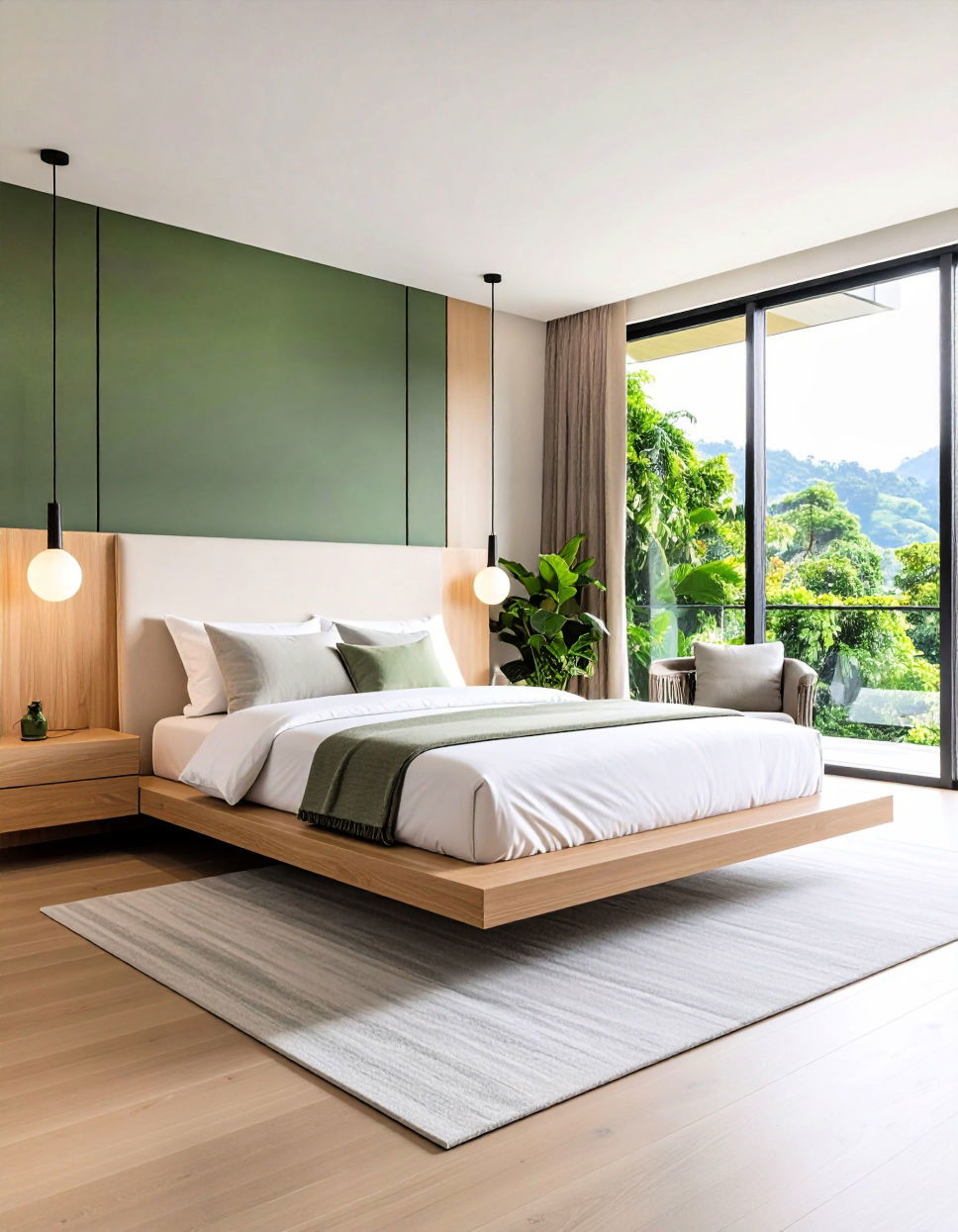
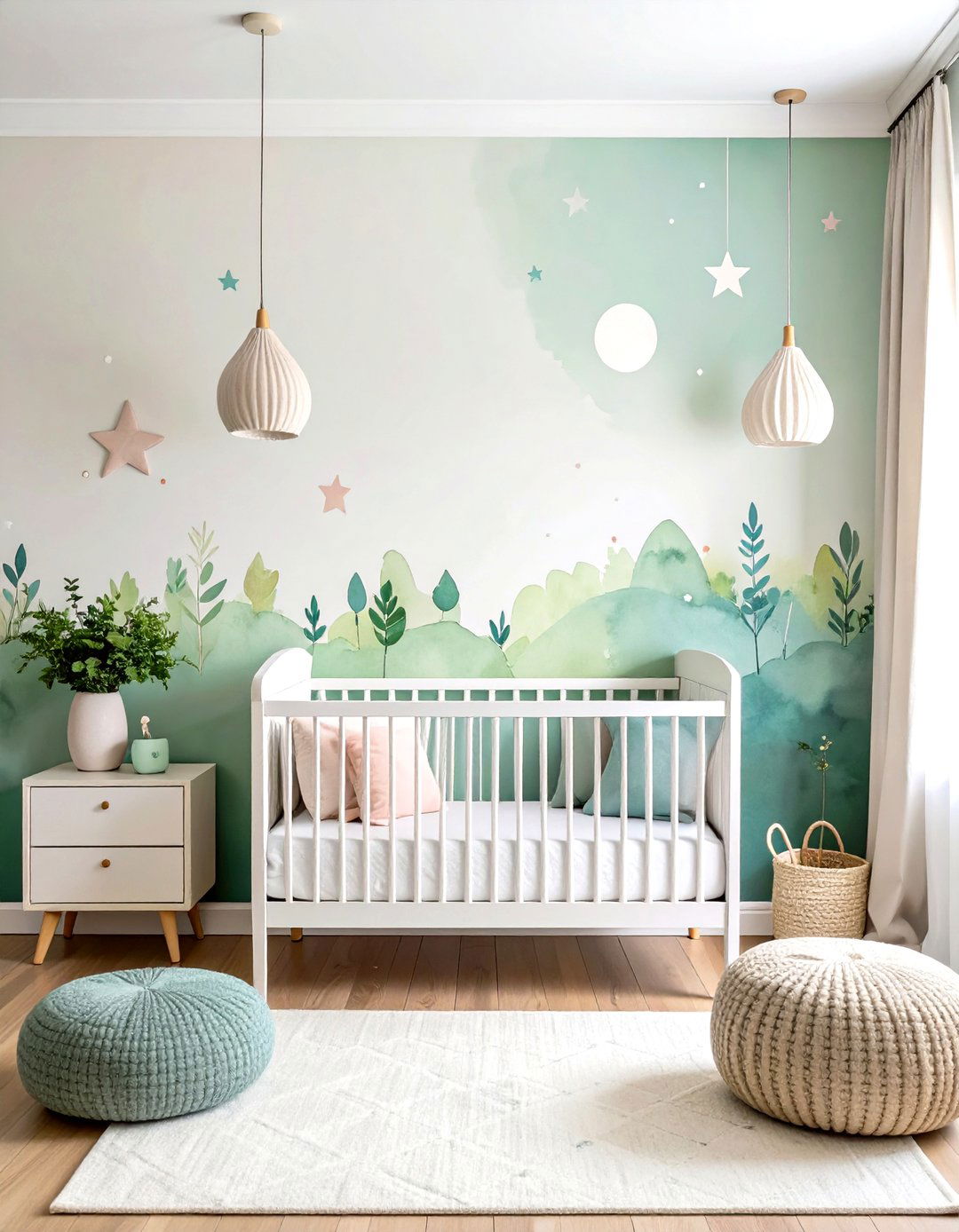
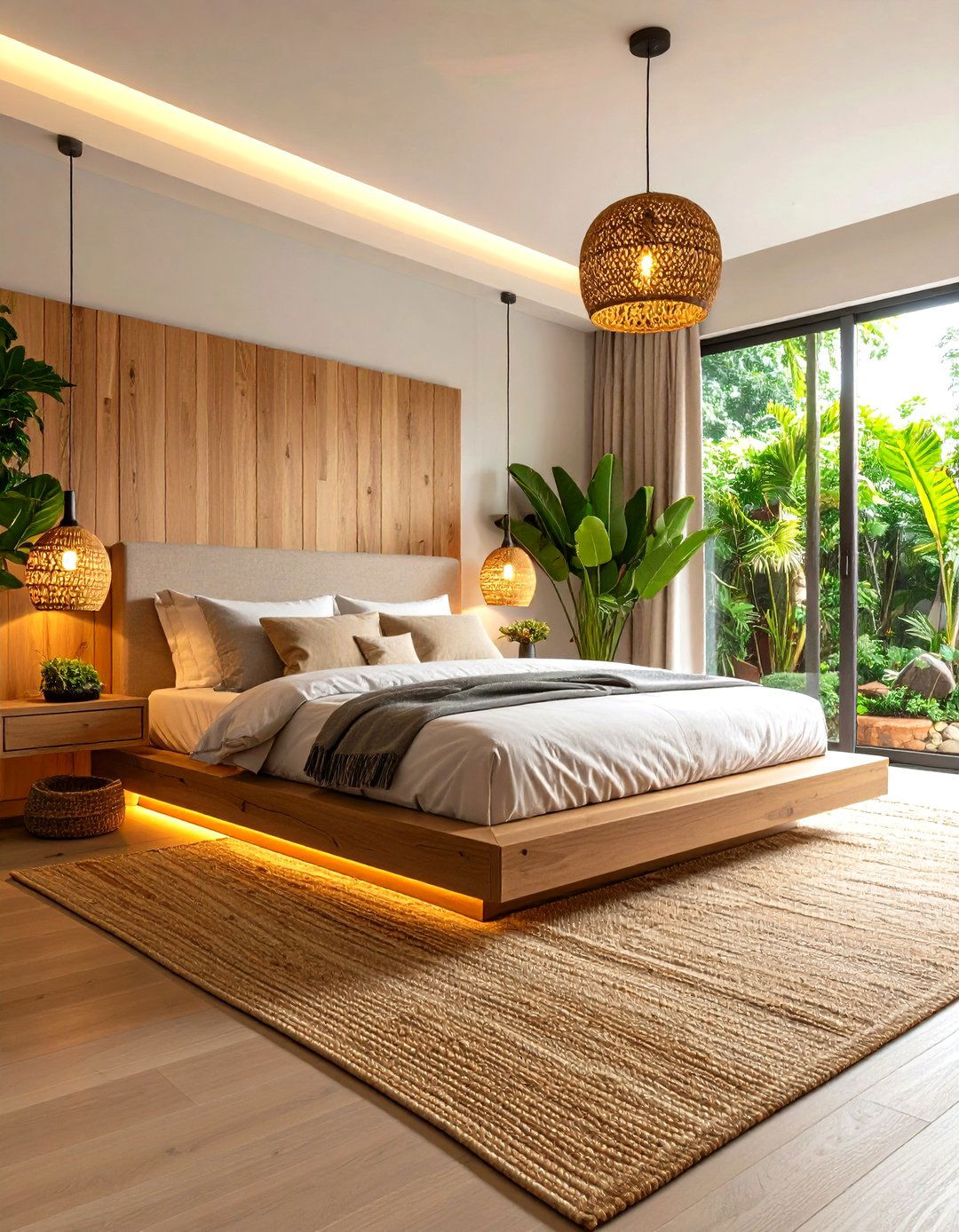
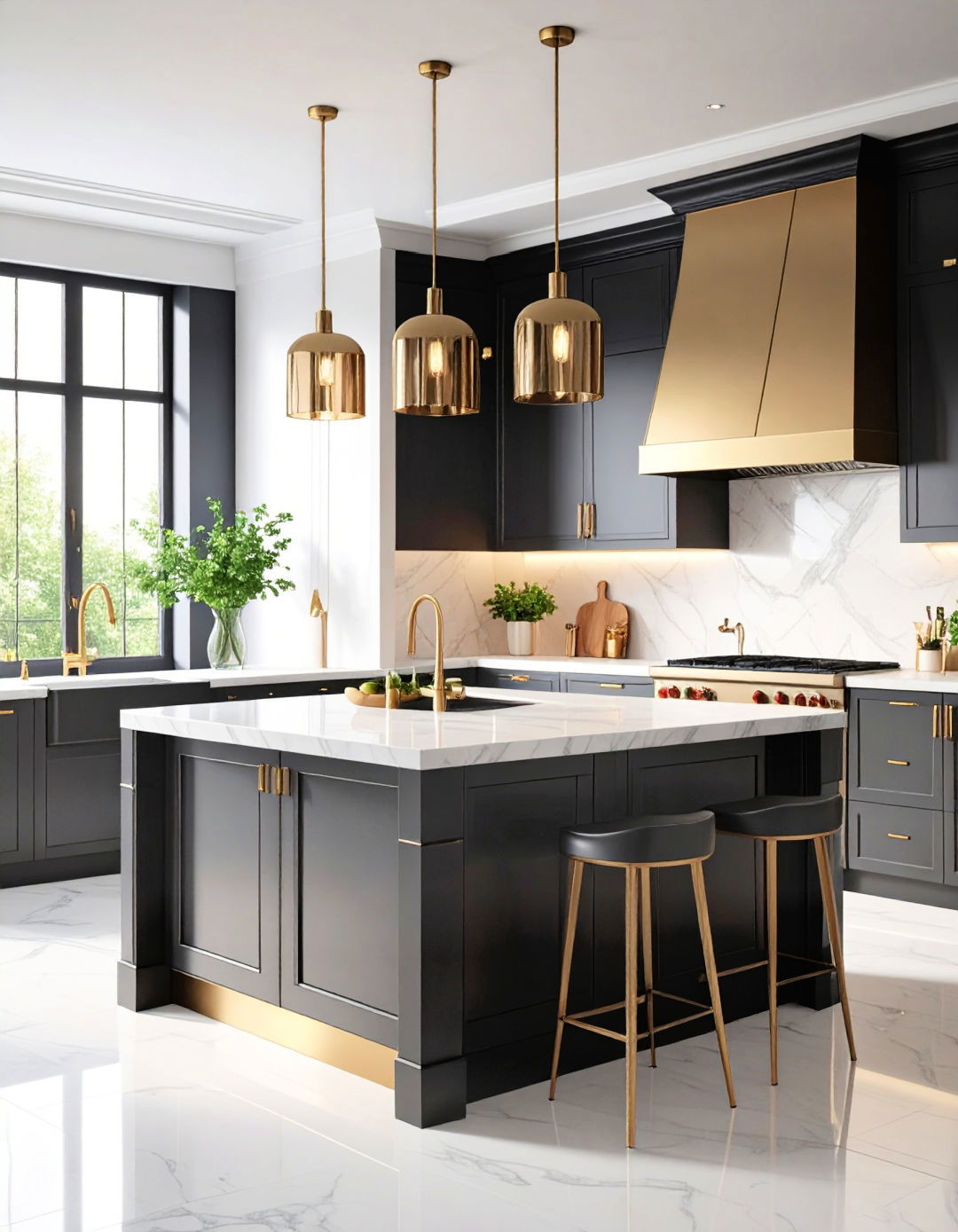
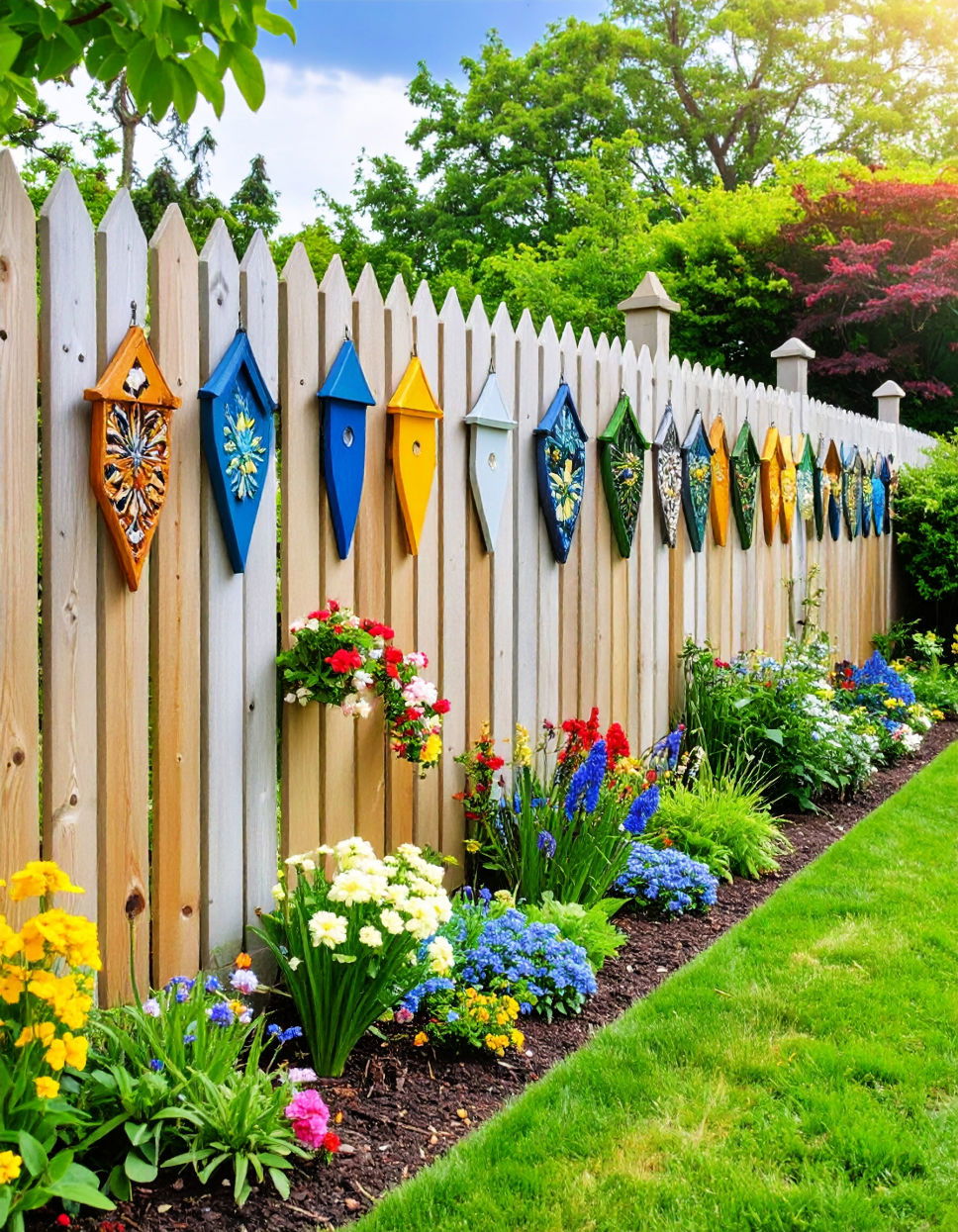
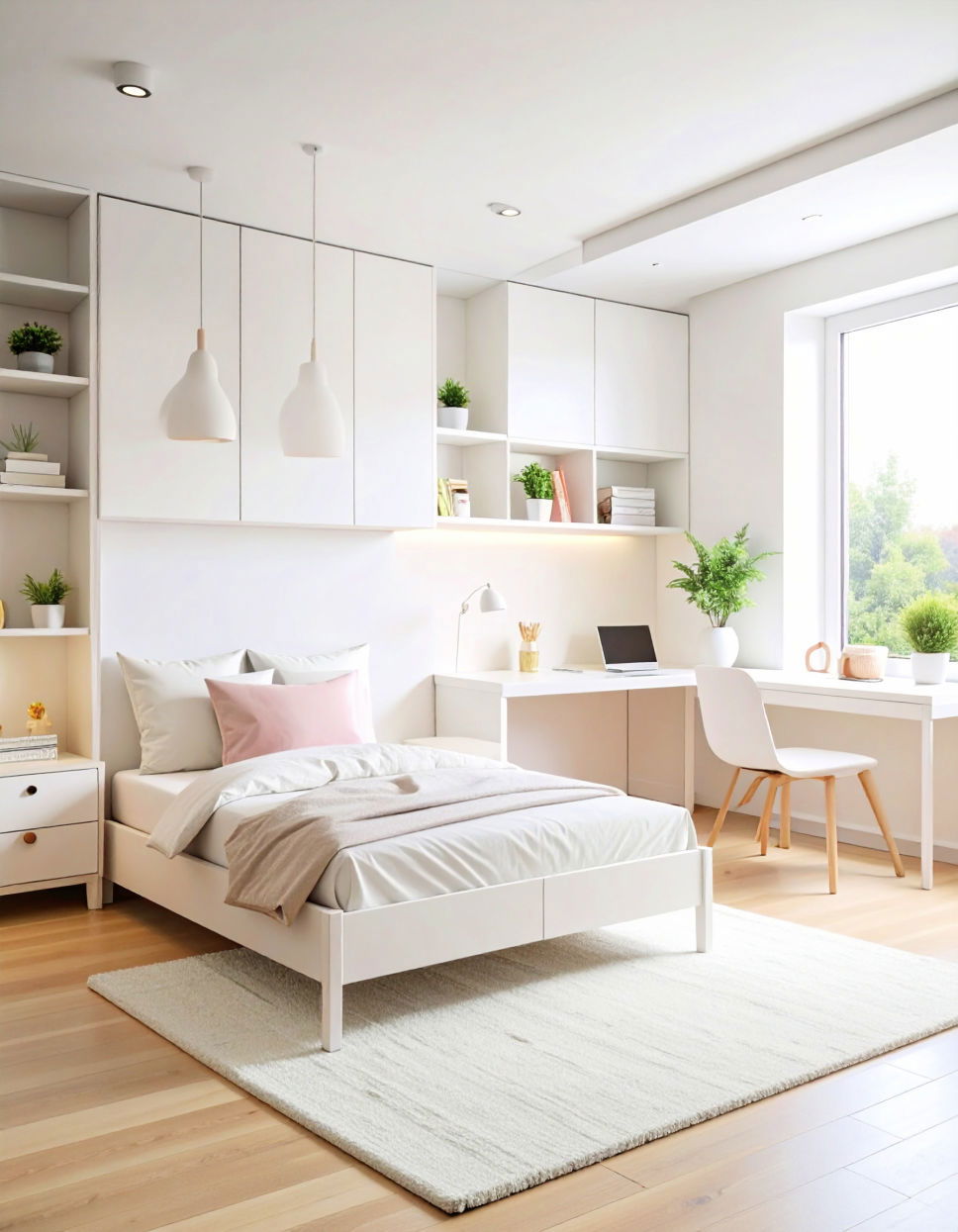

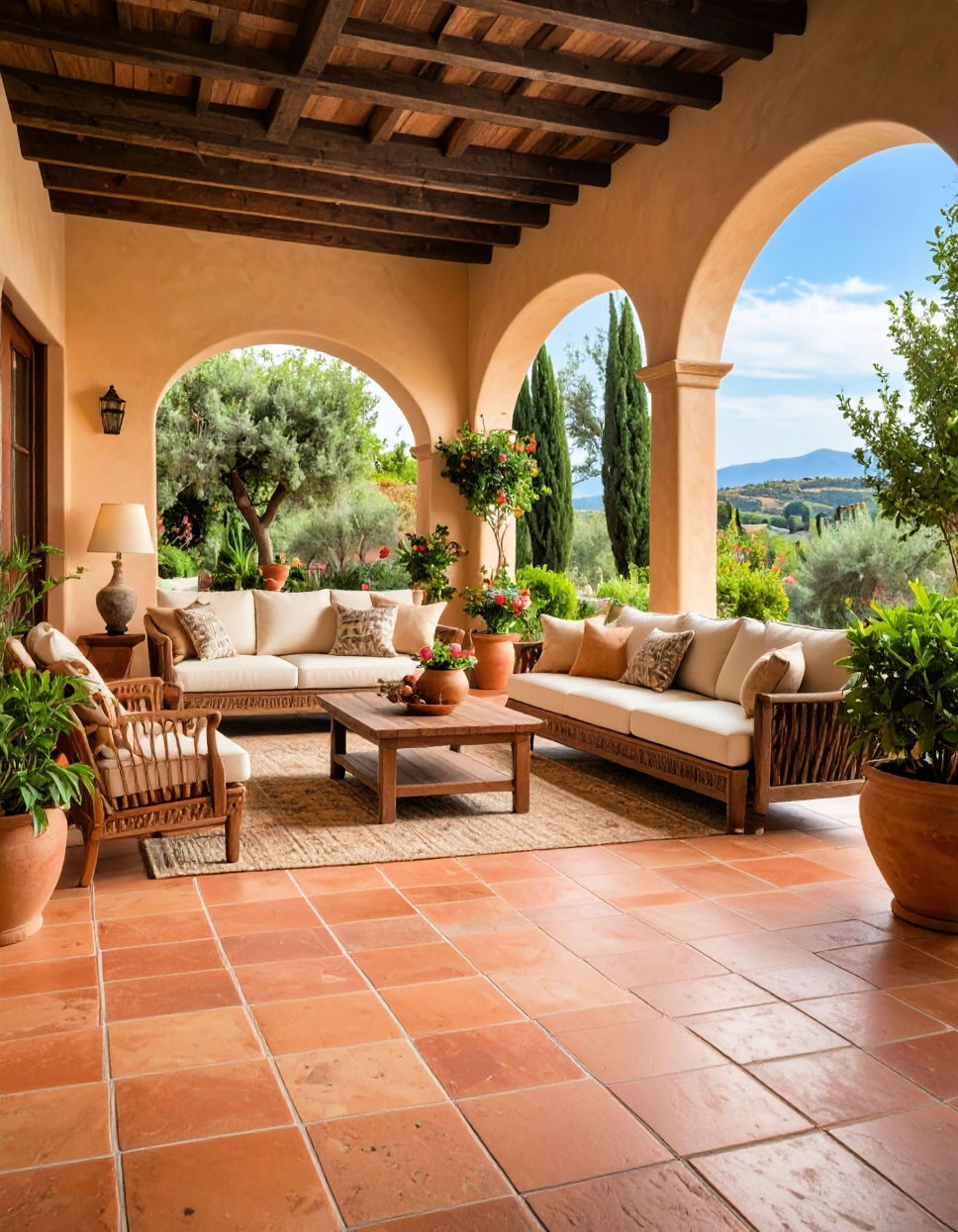

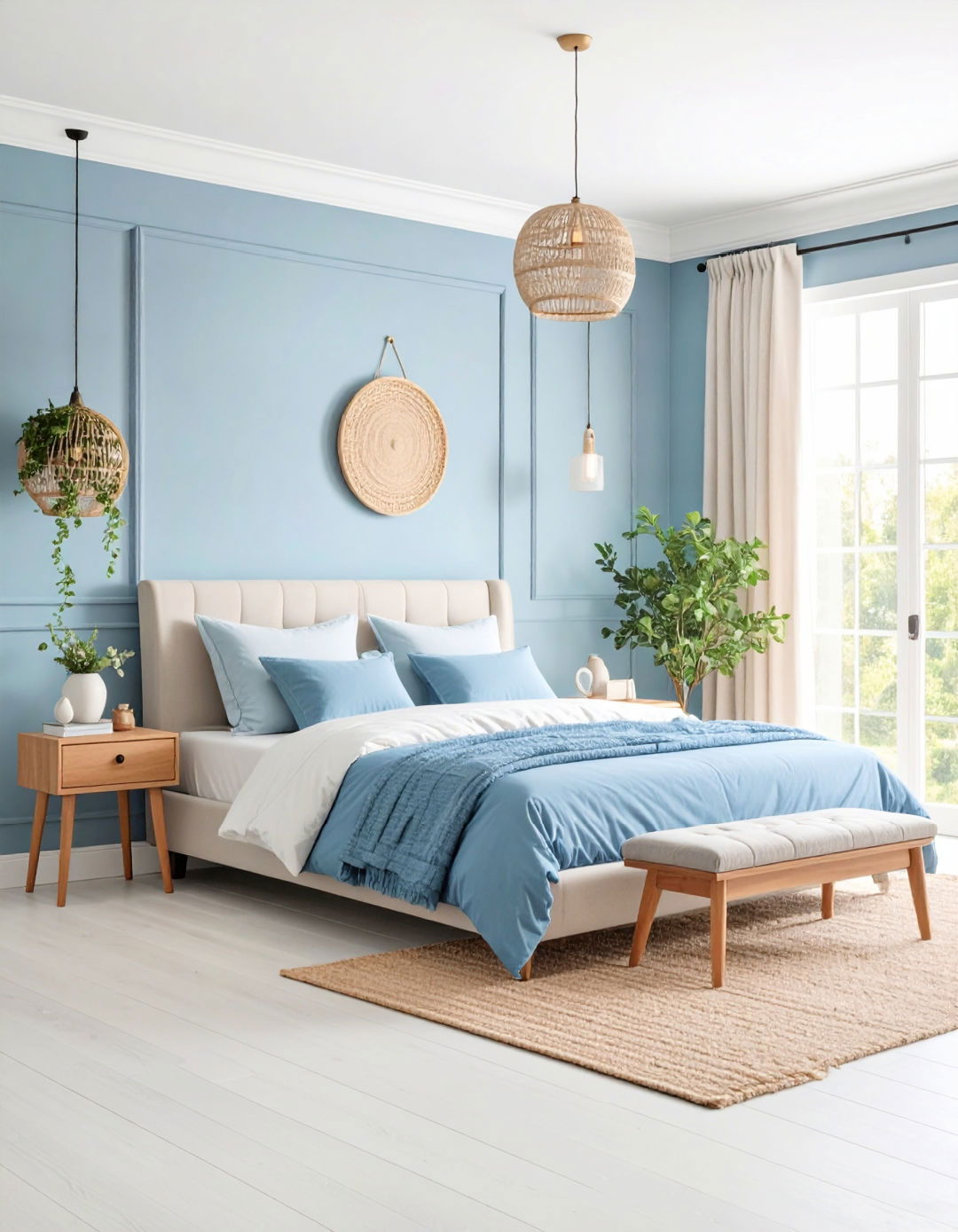
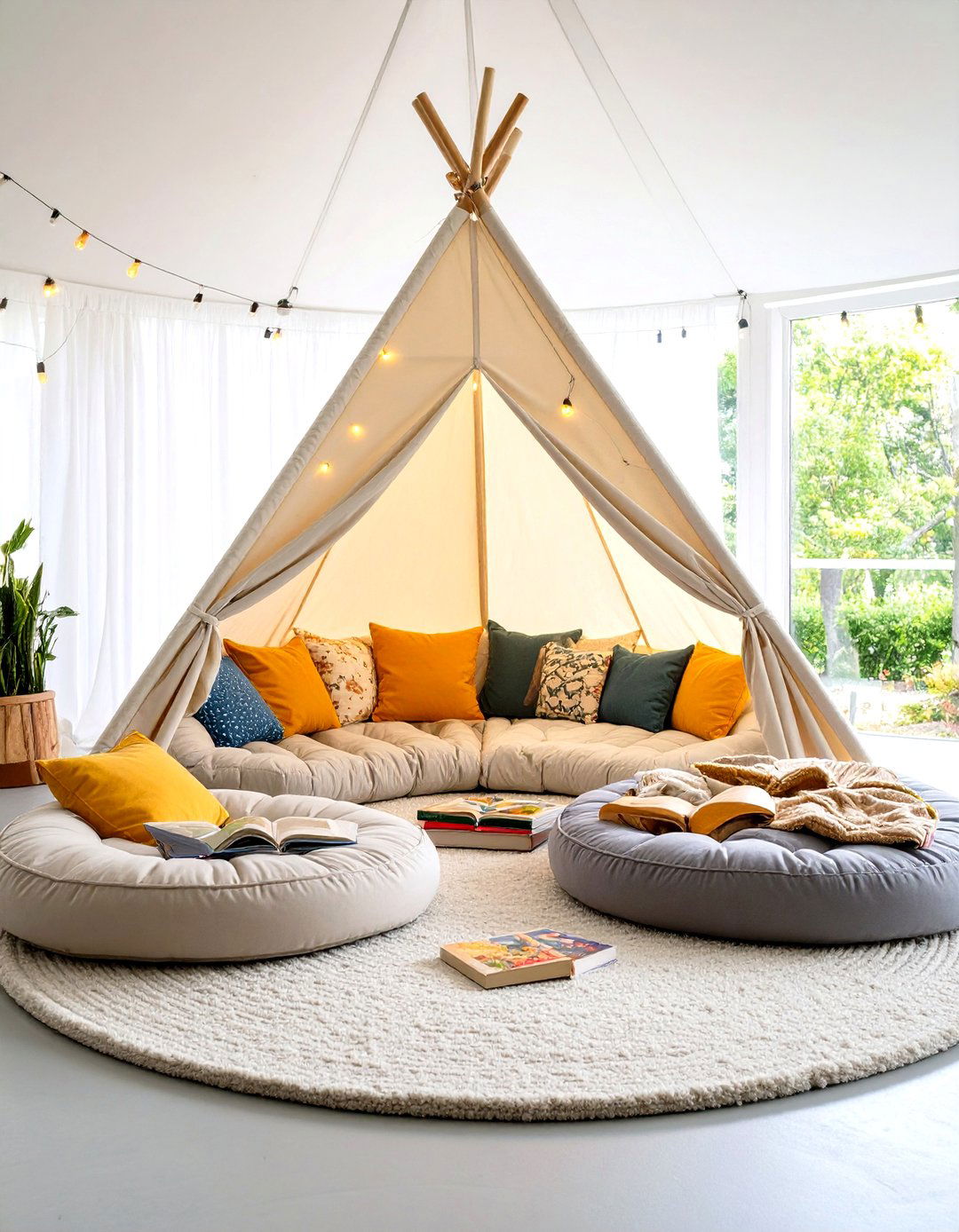
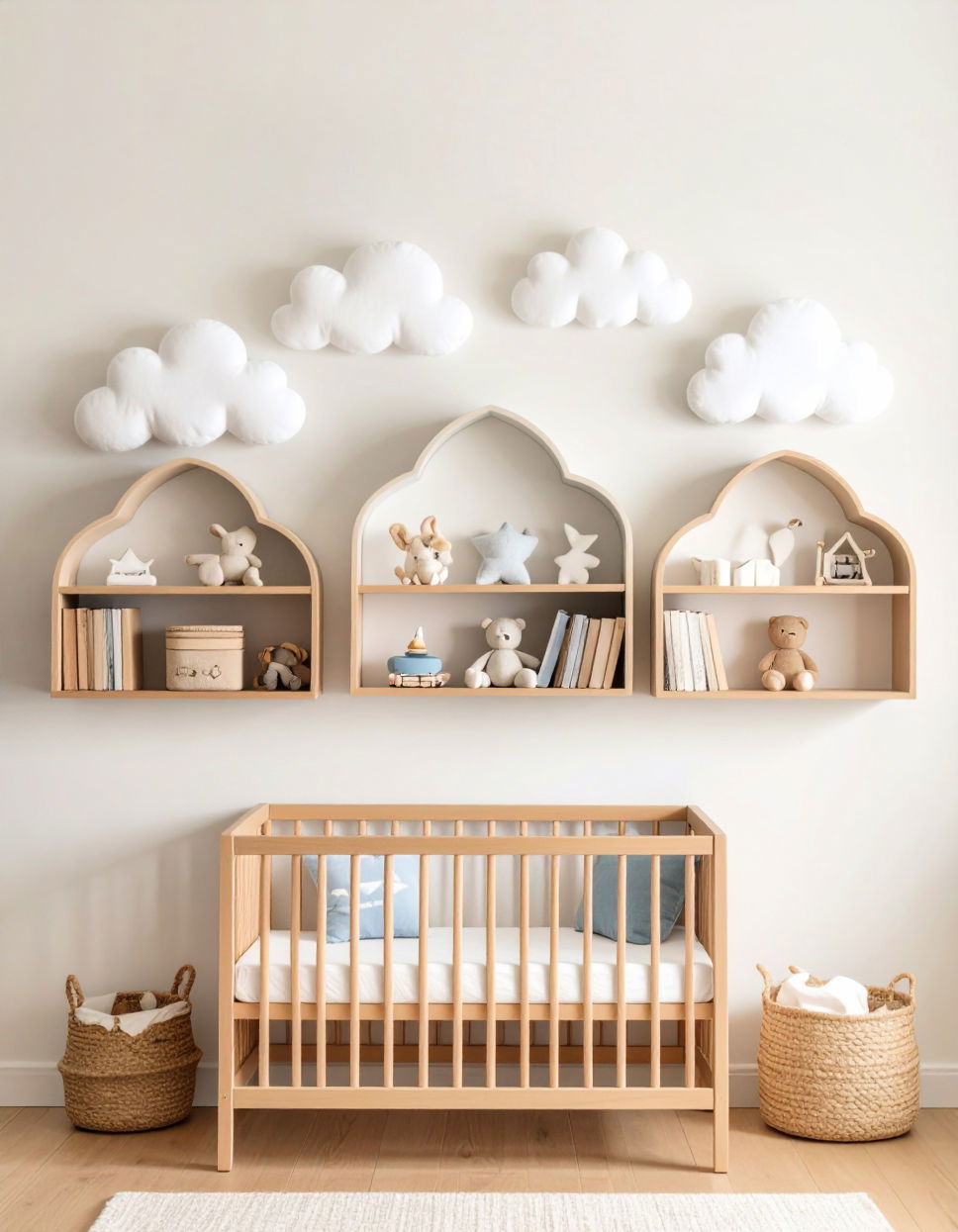
Leave a Reply